Recent advances in elevated-temperature flexible composite dielectrics for energy storage applications
Abstract
Dielectric composites play a crucial role in meeting the growing demand for high-energy-density capacitors that can operate effectively in challenging environments. These applications include aerospace power management, underground oil and gas exploration, electrified transportation, and pulse power systems. This work provides a comprehensive overview of current research on flexible, high-temperature-resistant composite dielectrics for energy storage, emphasizing enhancing thermal stability and dielectric performance. Initially, this work examines the crucial characterization parameters that define the performance of dielectric energy storage materials at elevated temperatures and explores the mechanisms behind them. Subsequently, the recent research achievements and the primary challenges facing these flexible composite materials are summarized. Further discussions on strategies are performed for optimizing the microstructure of these materials to improve performance, where three key dimensions are analyzed, such as system selection, filler types, and structural design. Additionally, the review introduces innovative approaches to enhance the temperature resistance of flexible dielectric composites, employing machine learning algorithms and high entropy design concepts. Finally, a summary and future outlook on the potential development pathways in this field are concluded.
Keywords
INTRODUCTION
With the rapid development of modern electronics and power systems, dielectric energy storage capacitors have gained significant attention due to their unique capability of ultra-fast charge/discharge cycles (millisecond timescale)[1-2]. However, their relatively low energy density compared to electrochemical storage devices presents a major challenge for applications requiring compact and miniaturized designs[3]. This limitation becomes particularly critical in emerging industries operating under extreme conditions, where dielectric capacitors must maintain stable performance at elevated temperatures ranging from 150 °C to 300 °C or higher. Representative applications include hybrid/electric vehicle power systems (operating at ≈ 140-150 °C), aerospace electronics (≈ 150-350 °C), and downhole tools for oil/gas exploration
Capacitor dielectrics include both inorganic and polymeric materials, with polymer films representing
Figure 1. Global market share of high-voltage capacitors and applications of high-temperature dielectric polymer film capacitors[7].
This work presents advancements in the research of flexible composite dielectric energy storage materials and devices that exhibit high-temperature resistance. As shown in Figure 2, the study first introduces the key parameters used to characterize the performance of high-temperature dielectric energy storage mechanisms. It then discusses the latest developments and current bottlenecks in the field of flexible, high-temperature-resistant composite dielectric energy storage materials and devices. The structural design of these materials is explored from three aspects: system selection, filler selection, and structural configuration. Additionally, a new strategy is proposed to enhance high-temperature resistance in flexible composite dielectric energy storage materials. Finally, the paper provides a summary and an outlook on the future opportunities and challenges in this area of research.
CRUCIAL PARAMETERS AND ENERGY STORAGE MECHANISMS FOR HIGH-TEMPERATURE COMPOSITE DIELECTRICS
Dielectric properties
In the case of a linear dielectric, where polarization is directly proportional to the electric field, the energy density (Ue) stored within the material exhibits a linear dependence on the dielectric constant. Additionally, it demonstrates a quadratic relationship with the applied electric field, which can be mathematically expressed as follows[14]
where ε0 is the vacuum dielectric constant, ε is the dielectric constant of the dielectric material. The Ue stored within a capacitor is directly proportional to the dielectric constant of the material. Therefore, enhancing the dielectric constant can lead to an increase in Ue. This improvement enables the design of smaller and lighter capacitors, addressing the increasing demand for highly integrated, compact, and miniaturized electronic and power systems.
Dielectric loss, commonly referred to as the dissipation factor or the tangent of the loss angle (tan δ), serves as a parameter indicating the energy loss that occurs during the polarization and depolarization processes of a dielectric material[15]. Dielectric loss adversely impacts both the Ud and η of capacitors, while simultaneously producing waste heat. Consequently, it is essential to enhance the dielectric constant while minimizing dielectric loss. The polarization characteristics of dielectric materials are influenced by temperature and frequency, leading to temperature and frequency-dependent variations in both dielectric constant and loss. Thus, for dielectric materials intended for operation across a broad spectrum of temperatures and frequencies, a minimal dependence of dielectric properties on these factors is imperative.
High-temperature dielectric energy storage mechanisms
Polarization mechanisms
Polarization significantly contributes to the energy storage capabilities of dielectric materials[16-17]. It is defined as the vector sum of dipole moments generated by electric dipoles within a unit volume of the dielectric. The polarization P is related to the relative dielectric constant εr. The related equation is given below:
The total polarization of a dielectric is the sum of different polarization mechanisms including electronic polarization, ionic polarization, dipolarization, and interfacial polarization[18], as shown in Figure 3.
Figure 3. Four types of polarization and their frequency dependence. pe, pi, pd, and pint denote the electronic, ionic, dipole, and interfacial polarization, respectively[19].
The mechanism of electronic polarization is shown in Figure 4A. Electronic polarization occurs when an external electric field displaces electrons relative to atomic nuclei, thereby generating a dipole moment. Once the electric field is removed, this common yet weak effect disappears[20-21].
Figure 4. Schematic representation of various polarizations: (A) Electronic polarization; (B) Ionic polarization; (C) Depolarization; and (D) Interfacial polarization[23].
Ionic polarization [Figure 4B] arises when an electric field displaces cations and anions asymmetrically, enhancing net polarization. This mechanism significantly boosts the high εr in ceramics like BaTiO3[21-24].
Dipole polarization [Figure 4C] involves the alignment of internal dipoles under an electric field. Polymers benefit from polar groups, which improve dielectric properties[25-27].
Interface polarization [Figure 4D] results from charge accumulation at interfaces (e.g., polymer-filler, electrode-dielectric), which is crucial for high εr in composites. Multilayer structures optimize this effect[25-27].
Charge injection and storage mechanism
Under certain conditions, an external electric field can inject charges into a composite dielectric, where traps (e.g., defects, impurities) capture and store them for energy storage. When the electric field is removed, charges may be slowly released. Optimizing trap density and distribution - via nanofillers or surface modification - enhances charge control and improves energy storage performance.
Mechanisms Related to Ferroelectricity and Antiferroelectricity
If the composite dielectric contains components of ferroelectric or antiferroelectric materials, its energy storage mechanism will involve the movement of electric domains and polarization reversal. In ferroelectrics, external fields rotate domains, enhancing polarization; residual polarization may remain after field removal. Antiferroelectric materials switch to a ferroelectric phase under fields, enabling abrupt polarization changes for energy storage. Combining these materials with dielectrics can optimize Ue and η.
Strategies for engineering dielectric constant construction
Based on physical mechanisms, methods to construct intrinsic polymer dielectrics with controllable electrical properties fall into three main aspects: induced polarization modulation, polarization orientation modulation, and domain engineering (e.g., Figure 5). This involves polarized atoms, metal complexes, dipole mobility, arrangement, free volume, and ferroelectric/conducting domain orientation. Mastering these enables designing polymers with desired εr values, opening up more opportunities in energy storage, flexible electronics, smart sensing, human-computer interaction, and 5G/6G communications.
Figure 5. Engineering strategy for building dielectric materials[28].
Modulation of induced polarization
The intensity of induced polarization (induced polarization) includes both electronic and ionic/atomic polarization. The Clausius-Mossotti equation
Figure 6. Correlation between εr and metal properties such as identity, volume fraction and coordination number[30].
Polarization orientation regulation
Orientational polarization, a key dipole polarization mechanism, describes the alignment of permanent dipoles in polar polymers under an electric field. While Fröhlich-Kirkwood theory models this behavior well for small rotating molecules, it fails for polymer chains due to dipole interactions, steric effects, and chain flexibility [Figure 7][31]. These constraints reduce εr by limiting dipole rotation. Engineering dipole mobility and free volume can optimize this polarization in polymers.
Figure 7. Localized chain conformations (I and II) of compounds DG1-DG4 with different dipole-dipole interactions. Red arrows indicate sulfonyl dipoles. β-leap is attributed to the rotation of the sulfonyl side group[31]. DG: Dipolar glass.
Domain engineering
Polymeric materials often contain heterogeneous domains with distinct properties, affecting crystallinity and phase separation. These domains create unique dielectric behavior, with domain relaxation causing time/temperature-dependent εr variations[32-33]. Conductive domains form interfaces with the insulating matrix under electric fields, generating Maxwell-Wagner-Sillars polarization that enhances εr. However, they also increase dielectric loss and reduce Eb via electron tunneling[34]. Encapsulating conductive domains in insulating polymers reduces leakage while maintaining high εr, improving overall dielectric performance
Figure 8. (A and B) Microphase-separated block copolymers including electrically insulating PS matrix and dispersed conductive domains formed by polymer chain segment-oligoaniline ion interactions; (C) Dielectric constants of copolymers with different block structures[36]. PS: Polystyrene.
Energy storage density and storage efficiency
The mechanism of energy storage and release in dielectric materials can be illustrated using a displacement (D)-electric field (E) loop, as depicted in Figure 9. Upon the application of an external electric field, the dielectric material undergoes polarization resulting from the relative displacement of opposing charges within the dipole structure. Following electric field removal, depolarization occurs. This involves the convergence of opposite charge centers. The definite integral of the D-E loop represents the energy density stored during polarization (Uc), as well as the Ud and the η, all of which exhibit temperature dependence. The performance of dielectric energy storage systems is critically dependent on key parameters. These include the slope, maximum electric field strength, and thermal stability of the D-E hysteresis loop.
Figure 9. Key characteristics for achieving high energy density in polymer dielectrics[37]. D-E: Displacement-electric field; Uc: charging energy density; Ud: discharge energy density.
The polarization state of the dielectric is quantified by the D
where E is the applied electric field and ε0 is the dielectric constant of the vacuum (8.854 × 10-12 F/m). Parametric polarization (P) is defined as the total electric dipole moment per unit volume, serving as a metric for assessing the polarization process within the dielectric material. Upon removal of the electric field, a depolarization process ensues, during which the opposing surface charges within the dielectric partially revert to their initial positions. This phenomenon results in a reduction of the D and a decrease in residual polarization. As a result, electrical energy is stored within the dielectric material as electrostatic energy via polarization. This energy is subsequently released during the depolarization process. This mechanism underlies the charging and discharging cycles characteristic of electrostatic capacitors.
Specifically, the dielectric D-E curves for polarization and depolarization processes do not align. This misalignment arises from energy dissipation within the dielectric material, leading to hysteresis loops [Figure 9]. The Uc is calculated by integrating the D with respect to the E along the polarization segment of the D-E loop. Conversely, the Ud is derived from the corresponding integrals along the depolarization segment, as outlined below:
Furthermore, the energy consumed during the charge-discharge cycle can be quantified by calculating the area enclosed within the dielectric D-E loop. To evaluate the effectiveness of the dielectric material in storing electrical energy while minimizing energy losses, the η is defined as:
Based on the aforementioned equation, it is evident that when subjected to the combined influences of elevated temperature and high electric field strength, the proportion of energy wasted increases significantly. This condition leads to a reduction in the dielectric material’s high voltage resistance, which in turn causes an expansion of the dielectric D-E loop and a decrease in the Eb. Therefore, the thermal stability of the charge and discharge characteristics emerges as a crucial factor in the development of high-performance dielectric materials.
Power density
Moreover, pulsed charge-discharge performance is crucial for dielectric energy storage applications. Optimal power density (Pd) and rapid discharge times (t0.9) are essential. In this context, t0.9 denotes the duration required to achieve 90% of the final discharge voltage. Pd and current density (Cd) are computed using the equations provided below.
where S represents the surface area of the electrode, while Imax indicates the maximum current in the underdamped discharge curve at an E. The correlation between Ud and Pd for widely utilized energy storage devices is illustrated in Figure 10.
Figure 10. Relationship between energy density and power density of common energy storage devices[38].
Recent advances and bottlenecks in composite dielectrics
In prior studies involving polymer nanocomposites, the integration of nanoscale organic and inorganic reinforcements effectively reduced conduction losses and prevented thermal runaway phenomena that occur at elevated temperatures. We have provided a comprehensive summary of the advances achieved in recent years regarding polymer nanocomposites. This summary focuses on key parameters, including εr, Eb, Ue, normalized energy density W = Ue/Eb and η, as presented in Table 1.
The progress made in recent years in the research of polymer nanocomposites in terms of dielectric constant
| Material system | εr | Eb (MV/m) | Ue (J/cm3) | W (kC/m2) | η (%) | References | |
| 1 | BT@TOns/PVDF | 12.6@1kHz | 561.2 | 21.3 | 37.95 | 64 | [39] |
| 2 | BNNs/P(VDF-HFP) | 15.3@10kHz | 492 | 21 | 42.68 | 80.2 | [40] |
| 3 | MF/PVDFP&H-x | 15.3@1kHz | 617.1 | 28.9 | 46.83 | [41] | |
| 4 | PVDF/f-BSZT/f1-CNT | 41.5@100Hz | 14 | 89.6 | [42] | ||
| 5 | CPEN@BSTNR/PEN | 17.30@1kHz | 204.1 | 3.19 | 15.63 | 95 | [43] |
| 6 | PEI-PEI/P(VDF-HFP)-P(VDF-HFP) | 4.5@100Hz | 413 | 18.9 | 45.76 | 90.2 | [44] |
| 7 | BT-BN/PVDF | 35.3@1kHz | 500.3 | 16.1 | 57 | [45] | |
| 8 | Graphene@TiO2/ P(VDF-HFP) | 7.44@10kHz | 655 | 19.39 | 29.60 | 83 | [46] |
| 9 | P-30vol.%M/P-M | 400 | 14.86 | 37.15 | 94.14 | [47] | |
| 10 | BT@ZIF-67/P (VDF-HFP) | 15.3@100Hz | 400 | 12.8 | 32 | [48] | |
| 11 | TO nb@SO/PVDF | 11@100Hz | 381.3 | 8.86 | 23.24 | 66.28 | [49] |
| 12 | BT@MgO/P(VDF-HFP) | 11.1@1kHz | 423.5 | 5.6 | 13.22 | 51.3 | [50] |
| 13 | SBN/DPAES/SBT | 4.51@1kHz | 500 | 4.64 | 9.28 | 84 | [51] |
| 14 | BNNs-F/PEI | 589 | 5.73 | 9.73 | 91.22 | [52] | |
| 15 | BT@TO NPs/PP | 3.02@100kHz | 580 | 5.58 | 9.62 | 99.3 | [53] |
| 16 | BST@TiO2/PVDF | 84.35@100Hz | 29.37 | [54] | |||
| 17 | BT@PBCN/PVDF | 8.8@1kHz | 464 | 10.86 | 23.41 | [55] | |
| 18 | C@HTO@AO/PVDF | 59.5@100Hz | 200.5 | [56] | |||
| 19 | BFO@TO-P(VDF-HFP)/PMMA | 11.7@1kHz | 549.2 | 19.3 | 35.14 | 61 | [57] |
| 20 | EP/BT@TiO2@PDA-RB | 45.7 | [58] | ||||
| 21 | PVDF/Ta-Al@TiO2 NPs/BT | 28.2@1kHz | 370 | 16.9 | 45.68 | [59] | |
| 22 | AZO-BT/PVDF | 14.4@1kHz | 460 | 9.1 | 19.78 | 57.6 | [60] |
| 23 | BT@TiO2@SiO2/PVDF | 9.4@1kHz | 620 | 19.7 | 31.77 | 57.6 | [61] |
| 24 | SPEN@BTNR/PE | 17.1@1KHz | 204.8 | 3.36 | 16.41 | [62] | |
| 25 | P(VDF-HFP)/P(VDF-TrFE) | 694.8 | 23.6 | 33.97 | [63] | ||
| 26 | Al2O3-PESU | 5.0@10Hz | 640 | 8.4 | 13.13 | 62 | [64] |
| 27 | h-BN/PVDF | 9.7@1kHz | 510 | 19.256 | 37.76 | 52.2 | [65] |
| 28 | PES-PEI | 3.2@1kHz | 697.3 | 6.4 | 9.18 | 82.7 | [66] |
| 29 | O-MMT@TiO2/MVSR | 10.28@10Hz | 80.21 | 0.118 | 1.48 | [67] | |
| 30 | BT NFs/P(VDF-CTFE) | 15@100Hz | 530 | 17.1 | 32.26 | 84.6 | [68] |
Analysis of Table 1 reveals significant variations in εr across material systems (3.02 to 84.35), with barium strontium titanate-titanium dioxide/polyvinylidene fluoride (BST@TiO/PVDF) achieving maximum εr through BST/TiO2 incorporation. Eb enhancements [up to 697.3 MV/m for polyethersulfone-polyetherimides (PES-PEI)] result from innovative fillers, structural optimization, and improved processing. Energy density ranges from 3.19 to 118.65 J/cm3, generally correlating with εr/Eb, though interfacial/microstructural factors also contribute. Most materials maintain η > 50%, with top performers like carboxylated polyarylene ether nitrile@strontium barium titanate nanorod/polyarylene ether nitrile (CPEN@BSTNR/PEN) reaching 95%. The dielectric performance strongly depends on polymer matrix [polyvinylidene fluoride (PVDF), polyetherimide (PEI), etc.] and filler [barium strontium titanate (BT), boron nitride nanosheets (BNNs), etc.] combinations.
Nevertheless, the intrinsic limitation related to the thermal stability of the host polymer persists as an unresolved issue, thereby impeding advancements in energy storage performance at elevated temperatures. It is well-established that the molecular structure of polymers alters when nearing a solid surface. This results in altered kinetics and a unique glass transition temperature (Tg) for ultrathin polymer films adsorbed on solid surfaces compared to the native polymer[69-70], with polymer films with free surfaces showing a decrease in Tg[71], however, when the surface of the polymer film is wetted, Tg increases due to confinement effects[72]. Elevated temperatures induce a significant reduction in the polymer’s Eb, thereby diminishing energy storage capabilities. This deterioration stems primarily from increased conduction nonlinearity resulting from combined thermal and electric field effects. Consequently, mitigating the high-temperature, high-field conduction in polymer dielectrics presents a fundamental challenge.
The intrinsic thermal instability of polymer matrices remains a key limitation for high-temperature energy storage performance. Near solid surfaces, polymer molecular structures reorganize, causing ultrathin films to exhibit modified kinetics and glass transition temperatures (Tg): free-surface films show decreased Tg, while confined/wetted films display increased Tg[69-72]. High temperatures severely reduce polymer Eb due to thermally enhanced conduction nonlinearity under electric fields, making conduction suppression a critical challenge.
To address these challenges, the initial step involves ensuring that polymer dielectrics can endure elevated temperatures and pressures. Consequently, polymers exhibiting high Tg or melting temperatures (Tm) have been selected and are commonly utilized in extreme environments[73-75]. However, their high conductivity limits energy storage performance[8]. Recent solutions include: (1) Developing wide-bandgap (Eg) polymers by disrupting conjugated backbones, though this requires complex synthesis and reduces thermal stability[76-77]; (2) Applying insulating coatings to suppress carrier injection[78-80]. It is crucial to recognize that interfacial adhesion is critical for multilayer films, while inorganic layers may impact self-clearing properties essential for capacitor durability[81].
High-temperature conduction can be suppressed by carrier traps, achievable through polymer structural modification, inorganic/polymer composites, or all-organic composites. While deeper traps generally enhance energy storage, they may distort local Es and reduce Eb. Consequently, there is an urgent requirement for quantitative studies to evaluate the impact of trap parameters, including depth, density, and spatial distribution, on the energy storage properties of polymers[82]. Furthermore, nano-confinement in ultrathin films shows promise for thermal stability, but scalable nanolaminate production via spin-coating/atomic layer deposition (ALD) remains challenging[83].
High-temperature environments severely degrade polymer dielectrics, causing Eb deterioration, leakage current surges, and significant conduction losses that impair insulation and Ue. Enhancing high-temperature Eb and η requires an in-depth study of nanofiller-polymer interfaces, particularly their polarization mechanisms, charge transfer processes, and thermal stability issues like thermal stress and expansion mismatches, as high temperatures can disrupt interface bonds and intensify molecular chain movement. Recent progress includes experimental approaches like organic-coated nanofillers and heterostructures for interface control[84], along with theoretical methods such as phase-field breakdown simulations and high-throughput design of laminated dielectrics[85], all aimed at reducing ferroelectric/dielectric losses while improving high-temperature performance.
Advances in structural designs for high-temperature composite dielectrics
Research on polymers intended for high-temperature dielectric applications has primarily concentrated on enhancing thermal stability, exemplified by elevated glass transition temperatures (Tg), and improving dielectric properties, such as increased εr. Improvements have been made in the following three ways:
System selection
Table 2 provides a comprehensive summary of the physical properties associated with selected high-temperature polymer dielectrics. Based on their thermal and electrical characteristics, polyimides (PIs), polyetherimides (PEIs), and fluorinated polyimides (FPEs) are the most promising candidates. The aromatic and bulky heterocyclic structures in these polymers contribute to their excellent high-temperature stability[8].
Properties of representative high-temperature polymer dielectrics[86]
| Dielectric | Tg (°C) | ɛr | tan δ | Eb (MV/m) (thickness) | λ (W/m K) |
| PET | 75 | 3.3 | 0.005 | 300 (25 μm) | 0.15 |
| PEN | 120 | 3.2 | 0.005 | 160 (75 μm) | 0.15 |
| PPS | 120 | 3.2 | 0.002 | 490 (9 μm) | 0.30 |
| PEEK | 150 | 3.1 | 0.004 | 200 (50 μm) | 0.32 |
| PC | 150-210 | 3.2 | 0.002 | 500 (10 μm) | 0.21 |
| PESU | 225 | 3.5 | 0.001 | 180 (25 μm) | 0.18 |
| PEI | 217-260 | 3.2 | 0.001 | 200 (25 μm) | 0.22 |
| FPE | 330 | 2.8-3.2 | 0.006 | 430 (8 μm) | 0.20 |
| PI | 360-410 | 3.4-3.5 | 0.002 | 300 (25 μm) | 0.12 |
| c-BCB | > 350 | 2.75 | 0.001 | 300 (10 μm) | 0.30 |
PI, which is a thermosetting material, is synthesized through the polycondensation and subsequent imidization of dianhydride and diamine monomers [Figure 11A]. The inherent imide and aromatic structures in the PI backbone confer exceptional heat resistance, evidenced by a high Tg ranging from 360-410 °C, along with excellent chemical resistance and mechanical strength[87]. At ambient temperature, PI demonstrates a εr of 3.4 and a dissipation factor of 0.002. However, significant increases in conductive losses at high temperatures and electric fields severely limit its energy storage performance. At a temperature of 150 °C and an Eb of 300 MV/m, the η is limited to 15%. Consequently, 85% of the stored energy is lost as Joule heat, yielding a low Ue of 0.36 J/cm3[88]. These findings demonstrate that despite its high thermal stability, the practical operating temperature of PI is ultimately constrained by increased conductivity at elevated temperatures and electric fields. Therefore, for high-temperature polymer dielectrics, suppressing conductivity is more critical than simply maximizing Tg.
Figure 11. Chemical structures of (A) PI; (B) PEI; (C) FPE; and (D) fluorene-based polyesters with 4,9-diamantane groups [87]. PI: Polyimide; PEI: polyetherimide; FPE: fluorene polyester; FDAPE: fluorenyl polyester with 4,9-diamantyl group.
PEI, a PI derivative with main-chain ether bonds (-O-) [Figure 11B], offers improved processability (melt-extrusion/solution-casting) despite lower thermal stability (Tg = 217-260 °C). It delivers superior high-temperature performance: Ue = 1.14 J/cm3 with η = 82% at 150 °C/300 MV/m[88]. FPE [Figure 11C], synthesized from fluorine bisphenol and phthaloyl chloride, shows exceptional thermal stability (Tg = 330 °C, εr stable to 300 °C) with Ue = 1.04 J/cm3 (η = 58%) at 150 °C/300 MV/m[86]. Its modified version FDAPE (4,9-dialkyl substitution) [Figure 11D] exhibits enhanced Tg = 450 °C while maintaining εr = 3.5 and tan δ = 0.003-0.004 from 25-350 °C, making it ideal for wide-temperature power electronics[89].
Packing selection
To enhance high-temperature energy storage in dielectric polymers, polymer nanocomposites with nanoscale reinforcements have been developed. Inorganic nanofillers (e.g., BN, Al2O3) with high thermal conductivity and wide bandgaps improve heat dissipation and high-temperature electrical insulation. Alternatively, all-organic nanocomposites reduce conductivity and stabilize charge transfer using high electron-affinity molecular fillers or blends.
Inorganic fillers
Nanofillers with wide bandgap
To study the room temperature dielectric energy storage, it was found that high dielectric ceramics doped with barium titanate (BaTiO3), sodium niobate (NaNbO3), and barium strontium titanate (BaxSr1-xTiO3) can improve the εr and Ue of polymer matrix[90-94], but their high-temperature performance remains poor. For instance, PI/BT nanocomposites show improved dielectric stability (up to 200 °C) but low η due to εr mismatch-induced field distortion, leakage current, and reduced Eb[95-96]. Shen et al.[97] developed a phase-field model [Figure 12A-G] showing that Joule heating exponentially degrades Eb in PI/STO films, with filler orientation (perpendicular to field) and reduced conductivity improving thermal stability [Figure 12H]. Before winding, the film’s maximum temperature (Tmax) is consistent with the ambient temperature. Following capacitor fabrication, however, both Tmax and the Eb degradation factor increase, accompanied by elevated dielectric loss [Figure 12I]. Wang et al.[98] found MgO’s wide bandgap reduces conductivity loss in PI composites, achieving 4.78 J/cm3 at 433 MV/m and 150 °C, demonstrating filler morphology’s critical role in insulating properties and Eb.
Figure 12. (A) Temperature distribution in PI-STO nanocomposite capacitors at 200 kV/mm and 400 K; (B) Pure PI; (C) Vertical nanofibers; (D) Vertical nanosheets; (E) random nanoparticles; (F) Parallel nanofibers; (G) Parallel nanosheets; (H) Tmax vs. thermal/electrical conductivity; (I) Performance comparison of Tmax (red), Eb degradation β (blue), and tan δ (black) under six conditions[97]. PI: Polyimide; STO: polyimide; Eb: electrochemical breakdown; tan δ: dissipation factor.
Unlike doped high εr ceramic fillers, the incorporation of wide bandgap nanofillers tends to improve the insulating properties of polymers more efficiently, resulting in superior high-temperature energy storage performance[99-102]. For example, Li et al.[100] incorporated BNNs (5.97 eV, 300 W/m·K) into BCB, reducing leakage current by 10× and conductivity loss from 18% to 3% at 200 MV/m (10 vol.%). The composite achieved 2 J/cm3 at 150 °C/400 MV/m with η > 90%, attributed to BNNs creating deep traps that suppress P-F emission and carrier migration. BNNs also increased thermal conductivity to 1.8 W/m·K, mitigating thermal degradation.
Ai et al.[101] systematically investigated the effects of filler permittivity (εr) and Eg on nanocomposite properties using Al2O3 (εr = 9.5, Eg = 8.6 eV), HfO2 (25, 5.8 eV), BNNs (4, 5.97 eV), and TiO2 (110, 3.5 eV) as nanofillers [Figure 13A-C]. The results demonstrated that Eb increased with filler Eg but decreased with higher εr. At 150 °C, the conductivity loss decreased by 41.1% (TiO2) to 93.9% (Al2O3) compared to pure PI. Wide-bandgap fillers (Al2O3/HfO2) not only minimized conductivity loss and achieved the highest η, but also exhibited superior charge trapping capability as confirmed by thermally stimulated depolarization current (TSDC) tests [Figure 13D]. These findings explain why Al2O3/HfO2 composites showed significantly better Ud than high-εr TiO2 systems.
Figure 13. Dielectric and energy storage properties of PI nanocomposites: (A) εr/loss vs. filler content (25 °C, 1kHz); (B) Weibull Eb and (C) Ue at 150 °C; (D) Simulated current density vs. filler content/E-field (Al2O3/HfO2/ TiO2, 150 °C)[101]. PI: Polyimide εr: dielectric constant; Eb: electrochemical breakdown; Ue: energy storage density.
High-aspect-ratio Al2O3 nanofibers (NWs) and nanosheets (NPLs) outperform nanoparticles (NPs) in enhancing polymer dielectric properties. Li et al.[100] prepared c-BCB/ Al2O3 composites showing NPLs’ superior Eb (489 MV/m at 150 °C vs. NWs’ 385 MV/m and NPs’ 334 MV/m). Phase field simulations demonstrated NPLs' greater breakdown resistance by inhibiting breakdown phase growth and providing more uniform electric field distribution compared to NPs/NWs. The wide-bandgap Al2O3 NPLs introduced deep traps, reducing leakage current. At 7.5 vol.%, c-BCB/ Al2O3 NPLs achieved Ue = 4.07 J/cm3 (η = 82%) at 150 °C/450 MV/m.
Although wide bandgap nanofillers can significantly reduce the conductivity loss of the polymer matrix at high temperatures and improve the η, the improvement of the εr and Ue of the composites is still limited. Li et al.[103] combined carbon quantum dots (CQDs) with the diamine monomer of PEI to integrate high electrical insulation and high thermal conductivity. The Coulomb blockade effect of CQDs restricts electron migration, and the bonding network formed by CQDs and PEI deepens and densifies the traps. As a result, compared with pure PEI, the Ud of the hybrid dielectric (PEI-NH2-CQDs) at 200 °C with a η of 90% is increased by 80%. With the intention of enhancing both dielectric and insulating properties concurrently, Li et al.[8] prepared PEI/BTNPs/BNNs ternary nanocomposites by blending BNNs with high dielectric strength and BT nanoparticles (BTNPs) with high εr, which have complementary functions. By varying the proportion of BTNPs and BNNs, the high-temperature energy storage performance of the nanocomposites was significantly enhanced. When the volume fractions of BTNPs and BNNs were set at 1.27 vol.% and 6.05 vol.%, respectively, the Ue of the resulting nanocomposites at a temperature of 150 °C achieved 2.92 J/cm3. Additionally, the Eb reached 547 MV/m, representing increases of 83% and 25%, respectively, compared to the original PEI material.
Nanofillers with low doping ratio
Unlike previous high volume fraction doping, Thakur et al.[104] demonstrated that ultralow nanoparticle doping (< 0.5 vol.%) enhances εr through multilayer interfacial polarization, with 20nm Al2O3/PEI (0.32 vol.%) achieving εr = 5 (55% increase) while maintaining low loss, though Eb and η remain unaffected. Yang et al.[105] achieved superior performance using 0.2 wt.% phosphotungstic acid sub-nanosheets in PEI, which trap charges and suppress breakdown, yielding Ue = 7.2 J/cm3 at 200 °C with η = 90% and 5 × 105 cycle stability.
Compared to amorphous PEI, semicrystalline/single-crystal polymers exhibit lower conductivity loss owing to their wider Eg[106]. Zhang et al.[14] employed high-Tg semicrystalline poly(arylene ether urea) (PEEU) as matrix with 0.21 vol.% nano-Al2O3 filler, increasing εr from 4.7 to 7.4. The Al2O3 expanded chain spacing and disrupted hydrogen bonds to enhance dipole response, while simultaneously restricting dipole mobility and elevating trap energy levels, significantly reducing high-field conductivity loss. The PEEU/ Al2O3 films achieved a discharge energy density of 5 J/cm3 at 150 °C with η > 90%. However, low-concentration doping is not universally effective - for instance, 0.5% Al2O3 in semicrystalline tetrafluoroethylene hexafluoropropylene vinylidene fluoride (THV) only reduced high-temperature/high-field conductivity loss without markedly improving dielectric properties[107].
Surface-modified nanofillers
The interfacial structure between organic and inorganic phases significantly influences nanocomposite properties. Inherent physicochemical differences often lead to defects and voids at these interfaces, degrading mechanical and electrical performance[108]. To enhance interfacial compatibility and performance, researchers have employed surface modification strategies. For example, Xu et al.[109], inspired by spider silk’s hierarchical nanostructure, combined long-chain poly(aryl ether sulfone) (DAPES) with BCB-modified BN nanosheets [Figure 14]. This approach enhanced interfacial integrity, achieving Ue = 2.7 J/cm3 with η > 90% at 150 °C/400 MV/m. Wang et al.[110] strengthened the surface of polymer composite dielectrics with in-situ generated ultrafine SiO2 nanoparticles and the bulk phase with commercially available SiO2 nanoparticles. The E-c-SiO2 NPs/PEI film showed significantly improved performance. At 200 °C and 530 MV/m, its Ud reached 4.26 J/cm3, a 1,274.19% increase over the pristine PEI film.
Figure 14. (A) Microstructure of spider silk and spider filaments; (B) Process diagram of BN-BCB@DPAES composites[109]. BN-BCB: Boron nitride-divinyltetramethyldisiloxane-bis(benzocyclobutene); DPAES: poly(aryl ether sulfone).
In summary, high-performance polymer nanocomposite dielectrics for high-temperature/high-field applications can be achieved by incorporating optimized inorganic nanofillers, where filler bandgap, size, morphology, distribution, and interfacial structure critically govern Ud and η.
Organic-organic and organic-inorganic nanocomposites
Microstructure design is vital for optimizing organic-organic dielectric nanocomposites. Core-shell and gradient structures, precisely controlled in nanoparticle aspects, can significantly boost dielectric properties. Incorporating high-εr organic nanoparticles and using multilayer structures help maintain high permittivity and greatly enhance Eb.
In organic-inorganic systems, performance depends on the uniform dispersion or well-controlled alignment of inorganic nanoparticles in the polymer matrix, influenced by inorganic particle surface properties, polymer matrix features, and processing methods. The high permittivity of inorganic fillers offers more design flexibility for advanced dielectric materials.
Both organic-organic and organic-inorganic dielectric nanocomposites are promising for advanced energy storage and electronics. By precisely controlling microstructure with synthesis techniques and understanding mechanisms, customizing materials for specific applications is achievable. Future research should focus on developing new nanofillers, improving interfacial interactions, and exploring new polymer matrices to further enhance nanocomposite dielectric properties.
Specifically, the molecular structure of polymers is not only closely associated with the mechanical properties and thermal stability of polymer materials, but also significantly affects their electrical properties[111-112]. Unlike nanocomposite dielectric materials, polymeric materials possess an inherent advantage in terms of structural tunability and designability, thereby heralding the emergence of all-polymer materials with superior performance.
Incorporating wide-bandgap fillers via physical blending effectively enhances the Eb and Ud of high-temperature polymers by introducing deep traps that suppress charge transport while maintaining flexibility. Ding et al.[113] blended PEI with PEEU, where unbonded urea groups acted as deep traps to improve Eb. Zhang et al.[114] demonstrated that strong intermolecular interactions in PEI/PI blends reduced internal defects, enhancing Eb. Feng et al.[115] introduced poly(vinylidene fluoride-co-hexafluoropropylene) P(VDF-HFP) into PI, creating interfacial deep traps through phase separation to boost η at high temperatures. Notably, Zhang et al.[116] achieved an Eb of 540 MV/m and Ud of 5.92 J/cm3 (η > 90%) at 150 °C in PEI/0.5 wt.% PVDF composites, attributed to nanoscale phase separation. Similarly, Shang et al.[66] fabricated electrospun PEI/polyethersulfone (PES) films with a Ud of 5.28 J/cm3 (η = 90%) at 150 °C and excellent cycling stability over 50,000 cycles, outperforming individual components. Xing et al.[117] prepared a nano-submicron structured film composed of P(VDF-HFP) and polymethyl methacrylate (PMMA) through electrospinning. This structure maximizes the utilization of the ferroelectric material components without sacrificing the Eb and η, and achieves improved dielectric properties. The sample reaches a Ud of 13.72 J/cm3 with a η of 80% at 740 kV/mm.
To increase the Ud, the introduction of high-volume fraction fillers encounters the challenge of filler aggregation. Yang et al.[118] developed PEI composites with trace hydroxyapatite (HAP) sub-nanofibers (0.9 nm diameter, Figure 15A and B) modified with oleic acid/octadecylamine. These sub-nanofibers provide large interfacial areas at low concentrations (0.5 wt.%), where surfactants boost dipole polarization via increased free volume while creating charge traps to improve Eb. The HAP/PEI nanocomposites [Figure 15C] achieved Ud of 5.14 J/cm3 (150 °C) and 3.1 J/cm3 (200 °C) with η = 90%, maintaining stability over 3 × 105 cycles. Notably, their 200 °C performance surpassed BOPP’s 70 °C capability [Figure 15D].
Figure 15. (A) HAP sub-nanofiber structure; (B) PEI-HAP composite with ultra-low filler content, showing chain distribution/mobility in matrix (dense) and interface (loose); (C) Ud and η of PEI, PEI-0.5wt.%HAP, and PEI-0.5wt.%SF at 200 °C vs. electric field; (D) Ue vs. discharge time for PEI-0.5wt.%HAP (200 °C) and BOPP (70 °C)[118]. HAP: Hydroxyapatite; PEI: polyetherimide; Ud: discharge energy density; η: charge/discharge efficiency; Ue: energy storage density.
Small molecule fillers, featuring good polymer compatibility and adjustable structures, boost polymer dielectric energy storage. However, doping above 1 wt.% undermines the polymer matrix’s thermal stability. Yang et al.[119] crafted a high-stability bifunctional dipole glass polymer (MW > 30,000 g/mol) using cyclohexane and sulfone functional groups. This enables up to ~ 10 wt.% doping while maintaining stability. Such a design enhances εr and Eb by optimizing the free-volume distribution around polar groups. The resultant blend achieves Ud of 8.34 J/cm3 at 150 °C and 6.21 J/cm3 at 200 °C (η = 90%). It also shows stable charge-discharge cycling (50,000 cycles) at 200 °C and 600 MV/m.
Structural configurations
Polymer structural designs, such as bilayer and multilayer structures, can enhance εr and Eb. In multilayer structures, the large, flat interfaces between alternating phases play a crucial role. They enhance interfacial polarization, which impacts εr, and redistribute the electric field. The high Eb phase blocks conductive paths, and the high εr phase improves polarization[120-121].
Multilayer inorganic/polymer composites significantly enhance capacitive performance through three synergistic mechanisms: interfacial carrier traps, suppressed charge injection, and reduced filler agglomeration. Liu et al.[122] demonstrated this approach by fabricating PI-BNNs bilayer films via layer-by-layer solution casting, where the PI-BNNs interface created deep traps [validated by density functional theory (DFT) and TSDC measurements] that reduced leakage current, achieving exceptional energy storage performance with Ud = 4.37 J/cm3 and η = 92% at 200 °C. Extending this strategy, Guo et al.[123] developed sandwich-structured 0.55Bi0.5(Na0.84K0.16)0.5TiO3-0.45(Bi0.1Sr0.85)TiO3 (BNKT-BST)/PEI composites [Figure 16] featuring BNKT-BST ceramic interlayers with remarkable intrinsic properties (η > 98% at breakdown field). This design simultaneously enhanced εr, Eb, and mechanical properties while reducing dielectric losses. The optimized trilayer 0-0.75-0 structure delivered outstanding performance metrics: a record Ud of 7.7 J/cm3 with η = 80.2% at 150 °C under 650 MV/m, along with excellent cyclic stability maintaining Ud between 4.67-4.77 J/cm3 and η exceeding 90% at 500 MV/m, demonstrating the effectiveness of multilayer architectures for high-temperature dielectric applications. Similarly, Zhang et al.[124] designed a three-layer (B-G-B) sandwich-structured dielectric film by alternately spin-coating composite solutions of BN/PMMA and graphene nanosheets (GNS)/PMMA. This structure achieved improved performance through synergistic effects, where the εr reached 4.3 (@1 kHz), and the Eb reached 458.6 kV/mm, which were 119% and 113% higher than those of pure PMMA, respectively.
Figure 16. Ultrahigh Ud vs. η in ceramic/polymer composites via stacked design: (A and B) BNT/BNKT/BNKT-BST structure and D-E behavior; (C) BNKT-BST/PEI fabrication process[123]. BNT: Bi0.5Na0.5TiO3; BNKT-BST: 0.55Bi0.5(Na0.84K0.16)0.5TiO3-0.45(Bi0.1Sr0.85)TiO3; PEI: polyetherimide; Ud: discharge energy density; D-E: displacement-electric field.
All-organic polymer composites demonstrate superior flexibility and manufacturability compared to inorganic/polymer systems by eliminating property mismatch issues[125]. Niu et al.[126] designed PEIs-PI-PEIs sandwich-structured films where PI surface expansion upon contact with PEI solution induces interfacial molecular rearrangement, forming deep trap energy levels. This unique structure significantly reduces high-temperature conductivity, achieving an energy loss of only 0.06 J/cm3 at 150 °C/250 MV/m (2.9% of pure PI) while maintaining η > 90% with Ud = 2.0 J/cm3 at 200 °C. Sun et al.[127] developed bilayer PVDF/PEI films featuring heterogeneous molecular interpenetration interfaces. The interfacial interactions induce polarity phase transformation that increases β/γ-phase content while reducing molecular chain spacing. This simultaneously enhances Young’s modulus to alleviate local stress distortion. The optimized film achieves remarkable performance: Ud = 29.89 J/cm3 with η = 81.1% at 940 MV/m, and maintains Ud = 22.89 J/cm3 when η ≥ 90%.
Research on high-temperature dielectric polymers focuses on enhancing thermal stability and dielectric properties through material selection, filler optimization, and structural engineering. Promising polymer matrices include PI (high thermal stability but with conductive losses), PEI (excellent processability and high-temperature performance), and modified FPE. For fillers, wide-bandgap nanofillers like Al2O3 outperform high εr ceramics in improving insulation, while low doping ratios (< 0.5 vol.%) can enhance εr in some crystalline polymers. Surface modification improves interfacial compatibility, and tailored microstructures (e.g., sub-nanofibers) further boost performance. Structurally, multilayer/bilayer designs (inorganic-polymer or all-organic) synergistically increase εr and Eb, with all-organic composites offering scalability advantages.
CONCEPTUAL DESIGN FOR HIGH-TEMPERATURE DIELECTRIC COMPOSITES
Machine learning technique
To accelerate the promotion of composite dielectrics in practical applications, predictive design tools are of great importance, such as density functional theory, molecular dynamics simulation, and machine learning (ML). Among them, ML has become the research focus due to its powerful data analysis capabilities[128]. In materials science, it is widely applied in various aspects, including material composition design, process optimization, performance prediction, and evaluation. Shen et al.[129] summarized the six steps of the ML workflow, as shown in Figure 17.
Figure 17. Workflow of a generic ML model with six steps[129].
The complexity of dielectric properties limits available data. Figure 18 illustrates the use of advanced computational techniques, including numerical simulations, molecular dynamics (MD), and finite element methods, to obtain crucial information[130]. Most basic dielectric properties can be simply determined or approximated. For polymer nanocomposites, a detailed calculation (from micrometers to millimeters) is required using a phase field model or a finite element model (FEM)[131]. Shen et al.[132] utilized ML techniques to evaluate the energy storage capacity of polymer nanocomposites through large-scale phase-field calculations of dielectric reactions, charge transfer, and decomposition mechanisms. Finite element methods and other computational tools are also used to analyze characteristics such as space charge transfer. For example, the bipolar charge transfer framework is used to characterize the space charge distribution in dielectrics related to breakdown robustness[133].
Figure 18. ML technique for developing novel energy storage materials from polymer-nanofiller nanocomposites[130]. ML: Machine learning.
Nanofiller properties (dielectric constant, conductivity, band gap, thermal conductivity) and interface characteristics (trap states, polarization, core-shell parameters) critically govern nanocomposite behavior, along with geometric factors (shape, volume fraction, distribution, orientation)[134]. Current characterization methods employ these physical descriptors[135], enabling process optimization and physics-based understanding. For example, nanofiller morphology, dielectric properties, and concentration directly represent composite performance[136-137]. As illustrated in Figure 18, ML leverages such descriptors to correlate filler attributes with dielectric behavior and predict energy storage capacity[138].
Liu et al.[139] adopted a three-variable composite electrothermal breakdown phase field model to simulate the evolution of the breakdown path of polymer composites, analyze the breakdown mechanism, and construct a functional relationship between the Eb and relevant parameters by combining ML to guide the design of high-temperature dielectric polymer-based composites. Liu et al.[140] proposed a conduction model that combines Richardson-Schottky emission with hopping conduction to describe the charge injection and transport in polymer nanocomposites. Through phase-field simulations incorporating electro-thermal-mechanical breakdown mechanisms, they investigated the effects of the volume fraction, size, and permittivity of nanofillers on the dielectric response and breakdown behavior.
ML is a valuable tool for materials science. Consequently, various ML algorithms have been applied to composite modeling and design optimization[128]. The goal is to design materials with superior, previously unattainable properties.
High entropy strategy
The Ue in a dielectric charge/discharge cycle is defined as
In this context, Pm, Pr, and E represent the maximum polarization, residual polarization, and applied electric field, respectively. A significant difference between Pm and Pr, along with a high Eb, results in elevated Ue. Additionally, a high ratio of Pm to Pr, indicating minimal polarization-switching hysteresis, enhances Ue (
The local compositional inhomogeneity is closely related to the atomic disorder in the RFE system[143], so configurational entropy (Sconfig) can be used to assess the local compositional inhomogeneity. Sconfig is defined as
The intrinsic dielectric Eb is empirically described as Eb∝eEg[147]. A wider Eg impedes electron transitions from the valence band to the conduction band. Consequently, this leads to elevated resistivity and enhanced Eb. Moreover, in dielectric materials, the relatively low carrier concentration means that entropy-induced lattice distortions significantly increase electron-lattice atom collisions. This enhanced electron scattering diminishes conductivity and subsequently reinforces the Eb[148]. Liu et al.[149] incorporated Ti/Hf into ZrP2O7 at ~ 300 °C, inducing lattice distortions that enhanced phonon scattering while suppressing grain growth, ultimately improving thermal stability with εr = 7.59-8.47 and tan δ = 8.5 × 10-3 - 1.2 × 10-2 at 100-1,100 °C.
Chen et al.[146] developed high-entropy relaxor ferroelectrics with multiphase nanoclusters and oxygen-octahedral tilting, creating ultrasmall polar nanoregions that enhance Eb and delay polarization saturation [Figure 19]. The entropy-stabilized system shows broadened Tc distribution and weakened inter-region coupling, achieving temperature/frequency stability with Ud = 3.38 ± 0.20 J/cm3 (η = 85.8% ± 6.0%) at 25-140 °C/400 kV/cm. Zhu et al.[150] expanded this strategy in (Bi0.5K0.5)TiO3 - based high-entropy RFE ceramics by reducing ion-size mismatch (entropy: 1.54 → 2.06 R), attaining Ud = 18.7 J/cm3 (η = 85%). These approaches enable high-temperature, high-performance dielectric materials for advanced energy storage.
Figure 19. Schematic of high entropy design strategy for localized polymorphic distortion and giant energy storage performance[146].
Fan et al.[151] further explored a new design concept and proposed a high-entropy modulation design for the quantum paraelectric-ferroelectric/antiferroelectric matrix. This design enables stable energy charge/discharge across a wide voltage range. In bulk perovskite materials, the recoverable energy density reaches 13.3 J/cm3. Optimized design and processing yield versatile polar, defect-free structures, and the material possesses an Eb of 750 kV/cm.
CONCLUSIONS
Flexible high-temperature dielectric polymer composites (for extreme environments like aerospace) are a current research focus, emphasizing thermal stability, charge storage, and high-temperature discharge behavior. Through optimized material systems, filler/structural design, and innovative methods (e.g., machine learning, high-entropy strategies), their temperature resistance has been significantly improved. Future research will develop novel materials and enhance reliability assessments to facilitate applications [Figure 20].
Figure 20. The summary and future prospects of flexible, high-temperature-resistant composite dielectric energy storage materials.
Dielectric materials store energy in electrostatic form, and their energy storage capacity mainly depends on the dielectric constant and breakdown field strength of the material. At high-temperature circumstances, the molecular motion of materials intensifies, leading to a decrease in dielectric constant and an increase in leakage current, which in turn affects energy storage performance. Through this work, it is known that there are the following methods to improve high-temperature energy storage performance:
(1) Nanocomposite modification. By introducing inorganic nano fillers (such as Al2O3, boron nitride nanosheets, etc.) to enhance the thermal stability and mechanical properties of the polymer matrix, while improving interfacial compatibility to reduce leakage current.
(2) Design of fully organic nanocomposites. Polymer materials have good structural adjustability and designability, and their thermal stability and durability are improved through physical mixing and molecular structure design of high-temperature polymers.
(3) Layered structure design. Utilizing the synergistic effect of polymer/ceramic laminated composite materials, the thermal stability of polymer films is enhanced through the nano-confinement effect, thereby achieving high energy storage density at high temperatures.
For future prospects, despite significant progress, polymer-based dielectric materials still face many challenges in the field of high-temperature energy storage, such as multiple interface defects, filler aggregation, and flexibility loss, which weaken the long-term service reliability of the materials.
With the development of nanotechnology and materials science, it is expected that more new flexible dielectric polymer composites with excellent high-temperature energy storage performance will be developed in the future. These materials will play an important role in fields such as new energy vehicles, aerospace power electronic devices, etc.
(1) Large-scale production and application. Currently, some research results have preliminarily achieved industrial roll-to-roll production, laying the foundation for the large-scale application of flexible dielectric polymer composites. In the future, it is necessary to further optimize production processes, reduce costs, and improve product consistency and reliability.
(2) Multifunctionality and Integration. With the development of electronic devices toward miniaturization and multifunctionality, flexible dielectric polymer composites will not only be limited to energy storage functions in the future, but may also integrate multiple functions such as sensing and driving, forming more intelligent and efficient systems.
(3) Environmentally friendly and sustainable development. While pursuing high performance, future research will also pay more attention to the environmental friendliness and sustainability of materials. Developing biodegradable and recyclable flexible dielectric polymer composites will become an important direction.
In summary, significant progress has been made in the study of energy storage and mechanisms of flexible dielectric polymer composites in high-temperature environments, but many challenges still remain. In the future, it is necessary to continue to strengthen basic research and application development work, and promote the continuous development of this field.
DECLARATIONS
Authors’ contributions
Writing original draft: Zhao, L.
Review & editing, supervision: Zhang, F.; Hu, H.
Availability of data and materials
Not applicable.
Financial support and sponsorship
The research was supported by the National Natural Science Foundation of China (52402164).
Conflicts of interest
Hu H is the Guest Editor of the Special Issue “Unraveling the Dynamic Interplay between Microstructure and Functional Characteristics in Advanced Electroceramics”. He is not involved in any steps of editorial processing, notably including reviewer selection, manuscript handling, and decision making. The other authors declared that there are no conflicts of interest.
Ethical approval and consent to participate
Not applicable.
Consent for publication
Not applicable.
Copyright
© The Author(s) 2025.
REFERENCES
1. Chen, J.; Zhou, Y.; Huang, X.; et al. Ladderphane copolymers for high-temperature capacitive energy storage. Nature 2023, 615, 62-6.
2. Kim, J.; Saremi, S.; Acharya, M.; et al. Ultrahigh capacitive energy density in ion-bombarded relaxor ferroelectric films. Science 2020, 369, 81-4.
3. Yang, B.; Zhang, Q.; Huang, H.; et al. Engineering relaxors by entropy for high energy storage performance. Nat. Energy. 2023, 8, 956-64.
4. Johnson, R.; Evans, J.; Jacobsen, P.; Thompson, J.; Christopher, M. The changing automotive environment: high-temperature electronics. IEEE. Trans. Electron. Packag. Manufact. 2004, 27, 164-76.
5. Weimer, J. A.; Electrical, power. technology. for. the. more. electric. aircraft. In AIAA/IEEE Digital Avionics Systems Conference, Proceedings of AIAA/IEEE Digital Avionics Systems Conference, Fort Worth, TX, USA, October 25-28; IEEE Publishers: Piscataway, New Jersey, USA, 1993; pp 445-450.
6. Wu, C.; Deshmukh, A. A.; Li, Z.; et al. Flexible temperature-invariant polymer dielectrics with large bandgap. Adv Mater 2020;32:e2000499.[DOI:10.1002/adma.202000499] Caution!.
7. Global Power Capacitor Markets in 2020: Expect Slow and Steady Market Growth. Available from: https://www.tti.com/content/ttiinc/en/resources/marketeye/categories/passives/me-zogbi-20200309.html [accessed on 29 May 2025].
8. Li, Q.; Chen, L.; Gadinski, M. R.; et al. Flexible high-temperature dielectric materials from polymer nanocomposites. Nature 2015, 523, 576-9.
9. Li, H.; Zhou, Y.; Liu, Y.; Li, L.; Liu, Y.; Wang, Q. Dielectric polymers for high-temperature capacitive energy storage. Chem. Soc. Rev. 2021, 50, 6369-400.
10. Li, S.; Dong, J.; Niu, Y.; et al. Enhanced high-temperature energy storage properties of polymer composites by interlayered metal nanodots. J. Mater. Chem. A. 2022, 10, 18773-81.
11. Yuan, C.; Zhou, Y.; Zhu, Y.; et al. Polymer/molecular semiconductor all-organic composites for high-temperature dielectric energy storage. Nat. Commun. 2020, 11, 3919.
12. Wei, R.; Zhan, C.; Yang, Y.; He, P.; Liu, X. Polyarylene ether nitrile and titanium dioxide hybrids as thermal resistant dielectrics. Chin. J. Polym. Sci. 2021, 39, 211-8.
13. You, Y.; Liu, S.; Tu, L.; et al. Controllable fabrication of poly(arylene ether nitrile) dielectrics for thermal-resistant film capacitors. Macromolecules 2019, 52, 5850-9.
14. Zhang, T.; Chen, X.; Thakur, Y.; et al. A highly scalable dielectric metamaterial with superior capacitor performance over a broad temperature. Sci. Adv. 2020, 6, eaax6622.
15. Huan, T. D.; Boggs, S.; Teyssedre, G.; et al. Advanced polymeric dielectrics for high energy density applications. Prog. Mater. Sci. 2016, 83, 236-69.
16. Kim, M. P.; Um, D. S.; Shin, Y. E.; Ko, H. High-performance triboelectric devices via dielectric polarization: a review. Nanoscale. Res. Lett. 2021, 16, 35.
17. Nan, C.; Shen, Y.; Ma, J. Physical properties of composites near percolation. Annu. Rev. Mater. Res. 2010, 40, 131-51.
18. Fan, B.; Zhou, M.; Zhang, C.; He, D.; Bai, J. Polymer-based materials for achieving high energy density film capacitors. Prog. Polym. Sci. 2019, 97, 101143.
19. Dong, J.; Deng, X.; Niu, Y.; Pan, Z.; Wang, H. Research progress of polymer based dielectrics for high-temperature capacitor energy storage. Acta. Phys. Sin. 2020, 69, 217701.
20. Qiu, J.; Gu, Q.; Sha, Y.; Huang, Y.; Zhang, M.; Luo, Z. Preparation and application of dielectric polymers with high permittivity and low energy loss: a mini review. J. Appl. Polym. Sci. 2022, 139, 52367.
21. O’Hara, A.; Balke, N.; Pantelides, S. T. Unique features of polarization in ferroelectric ionic conductors. Adv. Elect. Mater. 2022, 8, 2100810.
22. Dakin, T. Conduction and polarization mechanisms and trends in dielectric. IEEE. Electr. Insul. Mag. 2006, 22, 11-28.
23. Huang, S.; Liu, K.; Zhang, W.; et al. All-organic polymer dielectric materials for advanced dielectric capacitors: theory, property, modified design and future prospects. Polym. Rev. 2023, 63, 515-73.
24. Thakur VK, Gupta RK. Recent progress on ferroelectric polymer-based nanocomposites for high energy density capacitors: synthesis, dielectric properties, and future aspects. Chem. Rev. 2016, 116, 4260-317.
25. Baldwin, A. F.; Ma, R.; Huan, T. D.; Cao, Y.; Ramprasad, R.; Sotzing, G. A. Effect of incorporating aromatic and chiral groups on the dielectric properties of poly(dimethyltin esters). Macromol. Rapid. Commun. 2014, 35, 2082-8.
26. Chen, Y.; Du, Y. K.; Yue, Y. C.; et al. Correlation between energy storage density and differential dielectric constant in ferroelectrics. J. Elec. Materi. 2020, 49, 659-67.
27. Wei, J.; Zhu, L. Intrinsic polymer dielectrics for high energy density and low loss electric energy storage. Prog. Polym. Sci. 2020, 106, 101254.
28. Chen, J.; Pei, Z.; Chai, B.; et al. Engineering the dielectric constants of polymers: from molecular to mesoscopic scales. Adv. Mater. 2024, 36, e2308670.
29. Kao, K. C.; Dielectric, Phenomena. in. Solids.; 1st, ed.; San Diego: Academic Press. 2004, p573.
30. Mannodi-kanakkithodi, A.; Huan, T. D.; Ramprasad, R. Mining materials design rules from data: the example of polymer dielectrics. Chem. Mater. 2017, 29, 9001-10.
31. Rui, G.; Allahyarov, E.; Thomas, J. J.; Taylor, P. L.; Zhu, L. Temperature-dependent rotational dipole mobility and devitrification of the rigid amorphous fraction in unpoled and poled biaxially oriented poly(vinylidene fluoride). Macromolecules 2022, 55, 9705-14.
32. Zhu, Y.; Zhang, Z.; Litt, M. H.; Zhu, L. High dielectric constant sulfonyl-containing dipolar glass polymers with enhanced orientational polarization. Macromolecules 2018, 51, 6257-66.
33. Zapsas, G.; Patil, Y.; Gnanou, Y.; Ameduri, B.; Hadjichristidis, N. Poly(vinylidene fluoride)-based complex macromolecular architectures: from synthesis to properties and applications. Prog. Polym. Sci. 2020, 104, 101231.
34. Rui, G.; Huang, Y.; Chen, X.; et al. Giant spontaneous polarization for enhanced ferroelectric properties of biaxially oriented poly(vinylidene fluoride) by mobile oriented amorphous fractions. J. Mater. Chem. C. 2021, 9, 894-907.
35. Zhang, G.; Li, Y.; Tang, S.; Thompson, R. D.; Zhu, L. The role of field electron emission in polypropylene/aluminum nanodielectrics under high electric fields. ACS. Appl. Mater. Interfaces. 2017, 9, 10106-19.
36. Hardy, C. G.; Islam, M. S.; Gonzalez-delozier, D.; et al. Converting an electrical insulator into a dielectric capacitor: end-capping polystyrene with oligoaniline. Chem. Mater. 2013, 25, 799-807.
37. Yang, M.; Guo, M.; Xu, E.; et al. Polymer nanocomposite dielectrics for capacitive energy storage. Nat. Nanotechnol. 2024, 19, 588-603.
38. Collins, J.; Gourdin, G.; Foster, M.; Qu, D. Carbon surface functionalities and SEI formation during Li intercalation. Carbon 2015, 92, 193-244.
39. Jian, G.; Jiao, Y.; Feng, L.; et al. High energy density of BaTiO3@TiO2 nanosheet/polymer composites via ping-pong-like electron area scattering and interface engineering. NPG. Asia. Mater. 2022, 14, 356.
40. Luo, D.; Wang, W.; Feng, W.; Liu, S.; He, B.; Liu, Y. Achieving high energy density and efficiency concurrently in BNNS/P(VDF-HFP) composites via synchronous heating and stirring treatment. J. Energy. Storage. 2024, 82, 110553.
41. Zhu, T.; Zhao, H.; Zhang, N.; Zhang, C.; Bai, J. Tuning the MOF-derived Fe fillers and crystal structure of PVDF composites for enhancement of their energy storage density. Chem. Eng. J. 2024, 482, 149204.
42. Mukherjee, A.; Dasgupta, Ghosh. B.; Roy, S.; Lim, Goh. K. Ultra strong flexible Ba0.7Sr0.3Zr0.02Ti0.98O3/MWCNT/PVDF Nanocomposites: Pioneering material with remarkable energy storage for self-powered devices. Chem. Eng. J. 2024, 488, 151014.
43. Liu, Y.; Tang, B.; Wang, Z.; et al. Enhanced dielectric performances of strontium barium titanate nanorod composites via improved interfacial compatibility. J. Colloid. Interface. Sci. 2025, 680, 85-95.
44. Chen, J.; Zhang, X.; Wang, Z.; Chen, W.; Yuan, Q.; Wang, Y. Laminated ferroelectric polymer composites exhibit synchronous ultrahigh discharge efficiency and energy density via utilizing multiple-interface barriers. J. Mater. Chem. A. 2022, 10, 20402-13.
45. Guo, R.; Luo, H.; Zhai, D.; et al. Bilayer structured PVDF-based composites via integrating BaTiO3 nanowire arrays and BN nanosheets for high energy density capacitors. Chem. Eng. J. 2022, 437, 135497.
46. Sun, L.; Shi, Z.; Liang, L.; et al. Concurrently achieving high discharged energy density and efficiency in composites by introducing ultralow loadings of core-shell structured graphene@TiO2 nanoboxes. ACS. Appl. Mater. Interfaces. 2022, 14, 29292-301.
47. Zheng, Y.; Dai, Z.; Liu, C.; et al. High energy storage properties for dielectric composite by asymmetric three-layer films design. J. Energy. Storage. 2024, 93, 112387.
48. Li, W.; Liang, R.; Yang, L.; et al. Novel plum pudding structured BaTiO3@ZIF-67 filler design for high-performance dielectric polymer composites. J. Energy. Storage. 2024, 91, 112010.
49. Gao, L.; Zhang, J.; Song, L.; Bai, X.; Yu, C. Low-content core-shell-structured TiO2 nanobelts@SiO2 doped with poly(vinylidene fluoride) composites to achieve high-energy storage density. J. Mater. Sci:. Mater. Electron. 2022, 33, 18345-55.
50. Chen, J.; Huang, F.; Zhang, C.; Meng, F.; Cao, L.; Lin, H. Enhanced energy storage density in poly(vinylidene fluoride-hexafluoropropylene) nanocomposites by filling with core-shell structured BaTiO3@MgO nanoparticals. J. Energy. Storage. 2022, 53, 105163.
51. Zhao, D.; Cai, Q.; Zhu, X.; et al. Multilayer dielectric nanocomposites with cross-linked dielectric transition interlayers for high-temperature applications. ACS. Appl. Mater. Interfaces. 2022, 14, 42531-40.
52. Yu, X.; Yang, R.; Zhang, W.; et al. Interface engineering of polymer composite films for high-temperature capacitive energy storage. Chem. Eng. J. 2024, 496, 154056.
53. Xie, H.; Luo, H.; Pei, Z.; Chen, S.; Zhang, D. Improved discharge energy density and efficiency of polypropylene-based dielectric nanocomposites utilizing BaTiO3@TiO2 nanoparticles. Mater. Today. Energy. 2022, 30, 101160.
54. Zhang, F.; Wang, G.; Lin, N.; et al. Synergistic promotion of inter-particle and intra-particle polarizations in BST@TiO2/PVDF nanocomposites towards elevated dielectric properties. Compos. Sci. Technol. 2024, 251, 110547.
55. Ding, C.; Tang, X.; Yu, S.; et al. Concurrently enhanced dielectric properties and energy density in poly(vinylidene fluoride)-based core-shell BaTiO3 nanocomposites via constructing a polar and rigid polymer interfacial layer. J. Mater. Chem. C. 2022, 10, 6323-33.
56. Wang, P.; Guo, Z.; Sun, Z.; Li, G.; Bi, J.; Qian, L. Carrier gradient core-double shell structure with heterojunction transition layer for significantly enhancing dielectric properties. Chem. Eng. J. 2024, 496, 153968.
57. Jing, L.; Li, W.; Gao, C.; Li, M.; Fei, W. Achieving high energy storage performance in BiFeO3@TiO2 filled PVDF-based composites with opposite double heterojunction via electric field tailoring. Chem. Eng. J. 2022, 450, 138143.
58. Xu, H.; Xie, C.; Gou, B.; Wang, R.; Zhou, J.; Li, L. Core-double-shell structured BT@TiO2@PDA and oriented BNNSs doped epoxy nanocomposites with field-dependent nonlinear electrical properties and enhancing breakdown strength. Compos. Sci. Technol. 2022, 230, 109777.
59. Li, X.; Wang, Y.; Rao, Y.; Ma, X.; Yang, Y.; Zhang, J. Enhanced energy storage in PVDF-based nanocomposite capacitors through (00l)-oriented BaTiO3 single-crystal platelets. ACS. Appl. Mater. Interfaces. 2024, 16, 27785-93.
60. Wang, T.; Deng, Y.; Sun, H.; Wang, D.; Zhang, M. Enhancing energy storage performance of PVDF-based composites through semiconducting AZO-BT heterostructure. J. Energy. Storage. 2024, 82, 110541.
61. Wang, F.; Luo, H.; Zhai, D.; et al. Dielectric nanocomposites with high energy density by doping core-double shell structured fillers. Compos. Part. A:. Appl. Sci. Manuf. 2022, 159, 107019.
62. Zhang, Z.; Zhou, L.; Wang, L.; Hao, Q.; Hua, X.; Wei, R. Enhancing energy storage density of poly(arylene ether nitrile) via incorporating modified barium titanate nanorods and hot-stretching. Nano. Res. 2024, 17, 7574-84.
63. Sun, X.; Zheng, Y.; Liu, K.; et al. Gradient core-shell structure enabling high energy storage performances in PVDF-based copolymers. J. Mater. Chem. A. 2024, 12, 8216-25.
64. Chen, C.; Wang, S.; Gong, Z.; et al. Stable dielectric properties at high-temperature of Al2O3-PESU composite for energy storage application. Compos. Part. A:. Appl. Sci. Manuf. 2024, 181, 108109.
65. Meng, G.; She, J.; Wang, C.; Wang, W.; Pan, C.; Cheng, Y. Sandwich-structured h-BN/PVDF/h-BN film with high dielectric strength and energy storage density. Front. Chem. 2022, 10, 910305.
66. Shang, Y.; Feng, Y.; Meng, Z.; Zhang, C.; Zhang, T.; Chi, Q. Achieving synergistic improvement in dielectric and energy storage properties at high-temperature of all-organic composites via physical electrostatic effect. Mater. Horiz. 2024, 11, 1528-38.
67. Yang, T.; Wang, C.; Liu, L.; Zhang, L. Silicone elastomer dielectric composites by introducing novel O-MMT@TiO2 nanoparticles for energy harvesting application. Composites. Part. A:. Appl. Sci. Manuf. 2024, 185, 108351.
68. Ma, J.; Zhang, Y.; Miao, L.; Zhang, L.; Zhang, S.; Jiang, X. Combining covalent bonding interface among different components and controlled orientation of one-dimensional nanofibers for high energy density nanocomposites. Compos. Part. B:. Eng. 2022, 243, 110134.
69. Zuo, B.; Zhou, H.; Davis, M. J. B.; Wang, X.; Priestley, R. D. Effect of local chain conformation in adsorbed nanolayers on confined polymer molecular mobility. Phys. Rev. Lett. 2019, 122, 217801.
70. Papon, A.; Montes, H.; Hanafi, M.; Lequeux, F.; Guy, L.; Saalwächter, K. Glass-transition temperature gradient in nanocomposites: evidence from nuclear magnetic resonance and differential scanning calorimetry. Phys. Rev. Lett. 2012, 108, 065702.
71. Ediger, M. D.; Forrest, J. A. Dynamics near free surfaces and the glass transition in thin polymer films: a view to the future. Macromolecules 2014, 47, 471-8.
72. Rittigstein, P.; Priestley, R. D.; Broadbelt, L. J.; Torkelson, J. M. Model polymer nanocomposites provide an understanding of confinement effects in real nanocomposites. Nat. Mater. 2007, 6, 278-82.
73. Wan, B.; Dong, X.; Yang, X.; et al. Rising of dynamic polyimide materials: a versatile dielectric for electrical and electronic applications. Adv. Mater. 2023, 35, e2301185.
74. Ho, J. S.; Greenbaum, S. G. Polymer capacitor dielectrics for high temperature applications. ACS. Appl. Mater. Interfaces. 2018, 10, 29189-218.
75. Qiao, Y.; Yin, X.; Zhu, T.; Li, H.; Tang, C. Dielectric polymers with novel chemistry, compositions and architectures. Prog. Polym. Sci. 2018, 80, 153-62.
76. Deshmukh, A. A.; Wu, C.; Yassin, O.; et al. Flexible polyolefin dielectric by strategic design of organic modules for harsh condition electrification. Energy. Environ. Sci. 2022, 15, 1307-14.
77. Wang, R.; Zhu, Y.; Fu, J.; et al. Designing tailored combinations of structural units in polymer dielectrics for high-temperature capacitive energy storage. Nat. Commun. 2023, 14, 2406.
78. Zhu, T.; Zhao, H.; Zhang, N.; et al. Ultrahigh energy storage density in poly(vinylidene fluoride)-based composite dielectrics via constructing the electric potential well. Adv. Energy. Mater. 2023, 13, 2203587.
79. Yu, S.; Liu, Y.; Ding, C.; et al. All-organic sandwich structured polymer dielectrics with polyimide and PVDF for high temperature capacitor application. J. Energy. Storage. 2023, 62, 106868.
80. Bao, Z.; Du, X.; Ding, S.; et al. Improved working temperature and capacitive energy density of biaxially oriented polypropylene films with alumina coating layers. ACS. Appl. Energy. Mater. 2022, 5, 3119-28.
81. Ping, J. B.; Feng, Q. K.; Zhang, Y. X.; et al. A bilayer high-temperature dielectric film with superior breakdown strength and energy storage density. Nanomicro. Lett. 2023, 15, 154.
82. Zha, J.; Xiao, M.; Wan, B.; Wang, X.; Dang, Z.; Chen, G. Polymer dielectrics for high-temperature energy storage: Constructing carrier traps. Prog. Mater. Sci. 2023, 140, 101208.
83. Li, X.; Liu, B.; Wang, J.; et al. High-temperature capacitive energy storage in polymer nanocomposites through nanoconfinement. Nat. Commun. 2024, 15, 6655.
84. Guo, M.; Jiang, J.; Shen, Z.; Lin, Y.; Nan, C.; Shen, Y. High-energy-density ferroelectric polymer nanocomposites for capacitive energy storage: enhanced breakdown strength and improved discharge efficiency. Mater. Today. 2019, 29, 49-67.
85. Li, X.; He, S.; Jiang, Y.; et al. Unraveling bilayer interfacial features and their effects in polar polymer nanocomposites. Nat. Commun. 2023, 14, 5707.
86. Zhou, Y.; Wang, Q. Advanced polymer dielectrics for high temperature capacitive energy storage. J. Appl. Phys. 2020, 127, 240902.
87. Vanherck, K.; Koeckelberghs, G.; Vankelecom, I. F. Crosslinking polyimides for membrane applications: a review. Prog. Polym. Sci. 2013, 38, 874-96.
88. Zhou, Y.; Li, Q.; Dang, B.; et al. A Scalable, high-throughput, and environmentally benign approach to polymer dielectrics exhibiting significantly improved capacitive performance at high temperatures. Adv. Mater. 2018, 30, e1805672.
89. Venkat, N.; Dang, T. D.; Bai, Z.; et al. High temperature polymer film dielectrics for aerospace power conditioning capacitor applications. Mater. Sci. Eng:. B. 2010, 168, 16-21.
90. Feng, Y.; Zhou, Y.; Zhang, T.; et al. Ultrahigh discharge efficiency and excellent energy density in oriented core-shell nanofiber-polyetherimide composites. Energy. Storage. Mater. 2020, 25, 180-92.
91. Zou, K.; Dan, Y.; Yu, Y.; et al. Flexible dielectric nanocomposites with simultaneously large discharge energy density and high energy efficiency utilizing (Pb,La)(Zr,Sn,Ti)O3 antiferroelectric nanoparticles as fillers. J. Mater. Chem. A. 2019, 7, 13473-82.
92. Wang, S.; Huang, X.; Wang, G.; Wang, Y.; He, J.; Jiang, P. Increasing the energy efficiency and breakdown strength of high-energy-density polymer nanocomposites by engineering the Ba0.7Sr0.3TiO3 nanowire surface via reversible addition-fragmentation chain transfer polymerization. J. Phys. Chem. C. 2015, 119, 25307-18.
93. Huang, X.; Jiang, P. Core-shell structured high-k polymer nanocomposites for energy storage and dielectric applications. Adv. Mater. 2015, 27, 546-54.
94. Yu, K.; Wang, H.; Zhou, Y.; Bai, Y.; Niu, Y. Enhanced dielectric properties of BaTiO3/poly(vinylidene fluoride) nanocomposites for energy storage applications. J. Appl. Phys. 2013, 113, 034105.
95. Hu, P.; Sun, W.; Fan, M.; et al. Large energy density at high-temperature and excellent thermal stability in polyimide nanocomposite contained with small loading of BaTiO3 nanofibers. Appl. Surf. Sci. 2018, 458, 743-50.
96. Sun, W.; Lu, X.; Jiang, J.; et al. Dielectric and energy storage performances of polyimide/BaTiO3 nanocomposites at elevated temperatures. J. Appl. Phys. 2017, 121, 244101.
97. Shen, Z.; Wang, J.; Jiang, J.; et al. Phase-field model of electrothermal breakdown in flexible high-temperature nanocomposites under extreme conditions. Adv. Energy. Mater. 2018, 8, 1800509.
98. Wang, P.; Guo, Y.; Zhou, D.; et al. High-temperature flexible nanocomposites with ultra-high energy storage density by nanostructured MgO fillers. Adv. Funct. Mater. 2022, 32, 2204155.
99. Zhu, Y.; Zhu, Y.; Huang, X.; et al. High energy density polymer dielectrics interlayered by assembled boron nitride nanosheets. Adv. Energy. Mater. 2019, 9, 1903062.
100. Li, H.; Ai, D.; Ren, L.; et al. Scalable polymer nanocomposites with record high-temperature capacitive performance enabled by rationally designed nanostructured inorganic fillers. Adv. Mater. 2019, 31, e1900875.
101. Ai, D.; Li, H.; Zhou, Y.; et al. Tuning nanofillers in in situ prepared polyimide nanocomposites for high-temperature capacitive energy storage. Adv. Energy. Mater. 2020, 10, 1903881.
102. Liu, F.; Li, Q.; Li, Z.; et al. Poly(methyl methacrylate)/boron nitride nanocomposites with enhanced energy density as high temperature dielectrics. Composites. Science. and. Technology. 2017, 142, 139-44.
103. Li, X.; Luo, H.; Zhai, D.; et al. Enhanced capacitive energy storage of polyetherimide at high temperatures by integration of electrical insulation and thermal conductivity. Adv. Powder. Mater. 2025, 4, 100286.
104. Thakur, Y.; Zhang, T.; Iacob, C.; et al. Enhancement of the dielectric response in polymer nanocomposites with low dielectric constant fillers. Nanoscale 2017, 9, 10992-7.
105. Yang, M.; Li, H.; Wang, J.; et al. Roll-to-roll fabricated polymer composites filled with subnanosheets exhibiting high energy density and cyclic stability at 200 °C. Nat. Energy. 2024, 9, 143-53.
107. Thakur, Y.; Lean, M. H.; Zhang, Q. M. Reducing conduction losses in high energy density polymer using nanocomposites. Appl. Phys. Lett. 2017, 110, 122905.
108. Liu, J.; Shen, Z.; Xu, W.; et al. Interface-strengthened polymer nanocomposites with reduced dielectric relaxation exhibit high energy density at elevated temperatures utilizing a facile dual crosslinked network. Small 2020, 16, e2000714.
109. Xu, W.; Liu, J.; Chen, T.; et al. Bioinspired polymer nanocomposites exhibit giant energy density and high efficiency at high temperature. Small 2019, 15, e1901582.
110. Wang, Z.; Zhao, Y.; Yang, M.; et al. Surface strengthening of polymer composite dielectrics for superior high-temperature capacitive energy storage. Adv. Energy. Mater. 2025, 15, 2405411.
111. Bonardd, S.; Moreno-Serna, V.; Kortaberria, G.; Díaz, Díaz. D.; Leiva, A.; Saldías, C. Dipolar glass polymers containing polarizable groups as dielectric materials for energy storage applications. A minireview. Polymers. (Basel). 2019, 11, 317.
112. Zhuang, Y.; Seong, J. G.; Lee, Y. M. Polyimides containing aliphatic/alicyclic segments in the main chains. Prog. Polym. Sci. 2019, 92, 35-88.
113. Ding, S.; Bao, Z.; Wang, Y.; et al. Excellent high-temperature dielectric energy storage of flexible all-organic polyetherimide/poly(arylene ether urea) polymer blend films. J. Power. Sources. 2023, 570, 233053.
114. Zhang, Q.; Chen, X.; Zhang, B.; et al. High-temperature polymers with record-high breakdown strength enabled by rationally designed chain-packing behavior in blends. Matter 2021, 4, 2448-59.
115. Feng, Q.; Liu, D.; Zhang, Y.; et al. Significantly improved high-temperature charge-discharge efficiency of all-organic polyimide composites by suppressing space charges. Nano. Energy. 2022, 99, 107410.
116. Zhang, T.; Shi, B.; Zhang, S.; et al. Nanoscale phase separation achieved through trace PVDF/PEI blending enhances mechanical and energy storage performance at high temperatures. J. Power. Sources. 2024, 620, 235255.
117. Xing, K.; Hao, Y.; Wang, X. J.; et al. Enhanced energy storage performance of nano-submicron structural dielectric films by suppressed ferroelectric phase aggregation. Nat. Commun. 2025, 16, 2006.
118. Yang, M.; Yuan, F.; Shi, W.; et al. Sub-nanowires boost superior capacitive energy storage performance of polymer composites at high temperatures. Adv. Funct. Mater. 2023, 33, 2214100.
119. Yang, M.; Ren, W.; Jin, Z.; Xu, E.; Shen, Y. Enhanced high-temperature energy storage performances in polymer dielectrics by synergistically optimizing band-gap and polarization of dipolar glass. Nat. Commun. 2024, 15, 8647.
120. Sun, S.; Shi, Z.; Sun, L.; et al. Achieving concurrent high energy density and efficiency in all-polymer layered paraelectric/ferroelectric composites via introducing a moderate layer. ACS. Appl. Mater. Interfaces. 2021, 13, 27522-32.
121. Wang, J.; Xie, Y.; Zhang, Y.; et al. The ultrahigh discharge efficiency and energy density of P(VDF-HFP) via electrospinning-hot press with St-MMA copolymer. Mater. Chem. Front. 2021, 5, 3646-56.
122. Liu, X. J.; Zhong, S. L.; Zheng, M. S.; Dang, Z. M.; Chen, G.; Zha, J. W. Enhanced high-temperature capacitive performance of a bilayer-structured composite film employing a charge blocking layer. ACS. Appl. Mater. Interfaces. 2023, 15, 1105-14.
123. Guo, Y.; Zhao, W.; Li, D.; et al. Ultra-high capacitive energy storage density at 150 °C achieved in polyetherimide composite films by filler and structure design. Adv. Mater. 2025, 37, e2415652.
124. Zhang, D.; Li, Y.; Li, Y.; et al. Synergistically enhanced dielectric, insulating and thermally conductive performances of sandwich PMMA based dielectric films. Prog. Nat. Sci:. Mater. Int. 2024, 34, 591-7.
125. Zhou, C.; Xu, W.; Zhang, Y.; et al. Hydrogen bonding of aramid boosts high-temperature capacitive properties of polyetherimide blends. ACS. Appl. Mater. Interfaces. 2023, 15, 8471-9.
126. Niu, Y.; Dong, J.; He, Y.; et al. Significantly enhancing the discharge efficiency of sandwich-structured polymer dielectrics at elevated temperature by building carrier blocking interface. Nano. Energy. 2022, 97, 107215.
127. Sun, L.; Zhang, F.; Li, L.; et al. Superior capacitive energy storage enabled by molecularly interpenetrating interfaces in layered polymers. Adv. Mater. 2025, 37, e2412561.
128. Chen, C. P.; Cheng, C. Y.; Zou, H.; et al. Evaluation of cost-effectiveness of peginterferon plus ribavirin for chronic hepatitis C treatment and direct-acting antiviral agents among HIV-infected patients in the prison and community settings. J. Microbiol. Immunol. Infect. 2019, 52, 556-62.
129. Shen, Z.; Liu, H.; Shen, Y.; Hu, J.; Chen, L.; Nan, C. Machine learning in energy storage materials. InterdiscMat 2022, 1, 175-95.
130. Bera, S.; Singh, M.; Thantirige, R.; et al. 2D-nanofiller-based polymer nanocomposites for capacitive energy storage applications. Small. Sci. 2023, 3, 2300016.
131. Zhang, T.; Wu, X.; Luo, T. Polymer nanofibers with outstanding thermal conductivity and thermal stability: fundamental linkage between molecular characteristics and macroscopic thermal properties. J. Phys. Chem. C. 2014, 118, 21148-59.
132. Shen, Z. H.; Wang, J. J.; Lin, Y.; Nan, C. W.; Chen, L. Q.; Shen, Y. High-throughput phase-field design of high-energy-density polymer nanocomposites. Adv. Mater. 2018, 30, 1704380.
133. Wang, C.; Pilania, G.; Boggs, S.; Kumar, S.; Breneman, C.; Ramprasad, R. Computational strategies for polymer dielectrics design. Polymer 2014, 55, 979-88.
134. Roy, S. L.; Teyssedre, G.; Laurent, C.; Montanari, G. C.; Palmieri, F. Description of charge transport in polyethylene using a fluid model with a constant mobility: fitting model and experiments. J. Phys. D:. Appl. Phys. 2006, 39, 1427-36.
135. Chen, J.; Gao, Y.; Zhu, M.; Li, J.; Yu, Q. Space charge dynamics in double-layered insulation cable under polarity reversal voltage. IEEE. Trans. Dielect. Electr. Insul. 2020, 27, 622-30.
136. Rong, Q.; Wei, H.; Huang, X.; Bao, H. Predicting the effective thermal conductivity of composites from cross sections images using deep learning methods. Compos. Sci. Technol. 2019, 184, 107861.
137. Li, S.; Xie, D.; Lei, Q. Understanding insulation failure of nanodielectrics: tailoring carrier energy. High. Voltage. 2020, 5, 643-9.
138. Huang, Y.; Zhao, H.; Wang, Y.; et al. Predicting the breakdown strength and lifetime of nanocomposites using a multi-scale modeling approach. J. Appl. Phys. 2017, 122, 065101.
139. Liu, D.; Li, Q.; Zhu, Y.; et al. High-throughput phase field simulation and machine learning for predicting the breakdown performance of all-organic composites. J. Phys. D:. Appl. Phys. 2024, 57, 415502.
140. Liu, D.; Li, Q.; Zhu, Y.; et al. Physics-informed neural networks for phase-field simulation in designing high energy storage performance polymer nanocomposites. Appl. Phys. Lett. 2025, 126, 052901.
141. Jayakrishnan, A.; Silva, J.; Kamakshi, K.; et al. Are lead-free relaxor ferroelectric materials the most promising candidates for energy storage capacitors? Prog. Mater. Sci. 2023, 132, 101046.
142. Shetty, S.; Damodaran, A.; Wang, K.; et al. Relaxor behavior in ordered lead magnesium niobate (PbMg1/3Nb2/3O3) thin films. Adv. Funct. Materials. 2019, 29, 1804258.
143. Chen, J.; Qi, H.; Zuo, R. Realizing stable relaxor antiferroelectric and superior energy storage properties in (Na1-x/2Lax/2)(Nb1-xTix)O3 lead-free ceramics through A/B-site complex substitution. ACS. Appl. Mater. Interfaces. 2020, 12, 32871-9.
144. Sarkar, A.; Wang, Q.; Schiele, A.; et al. High-entropy oxides: fundamental aspects and electrochemical properties. Adv. Mater. 2019, 31, e1806236.
145. Yang, B.; Zhang, Y.; Pan, H.; et al. High-entropy enhanced capacitive energy storage. Nat. Mater. 2022, 21, 1074-80.
146. Chen, L.; Deng, S.; Liu, H.; Wu, J.; Qi, H.; Chen, J. Giant energy-storage density with ultrahigh efficiency in lead-free relaxors via high-entropy design. Nat. Commun. 2022, 13, 3089.
147. Kim, C.; Pilania, G.; Ramprasad, R. Machine learning assisted predictions of intrinsic dielectric breakdown strength of ABX3 perovskites. J. Phys. Chem. C. 2016, 120, 14575-80.
148. Mu, S.; Samolyuk, G. D.; Wimmer, S.; et al. Uncovering electron scattering mechanisms in NiFeCoCrMn derived concentrated solid solution and high entropy alloys. npj. Comput. Mater. 2019, 5, 138.
149. Liu, P.; Tian, Z.; Chen, Z.; Wen, S.; Zheng, L.; Li, B. Suppressing the phase transition of ZrP2O7 by defect and entropy regulation for high-temperature wave-transparent material application. J. Adv. Ceram. 2024, 13, 1164-77.
150. Zhu, B.; Zhang, J.; Long, F.; et al. Boosting energy-storage in high-entropy pb-free relaxors engineered by local lattice distortion. J. Am. Chem. Soc. 2024, 146, 29694-702.
Cite This Article
How to Cite
Download Citation
Export Citation File:
Type of Import
Tips on Downloading Citation
Citation Manager File Format
Type of Import
Direct Import: When the Direct Import option is selected (the default state), a dialogue box will give you the option to Save or Open the downloaded citation data. Choosing Open will either launch your citation manager or give you a choice of applications with which to use the metadata. The Save option saves the file locally for later use.
Indirect Import: When the Indirect Import option is selected, the metadata is displayed and may be copied and pasted as needed.
About This Article
Special Issue
Copyright
Data & Comments
Data






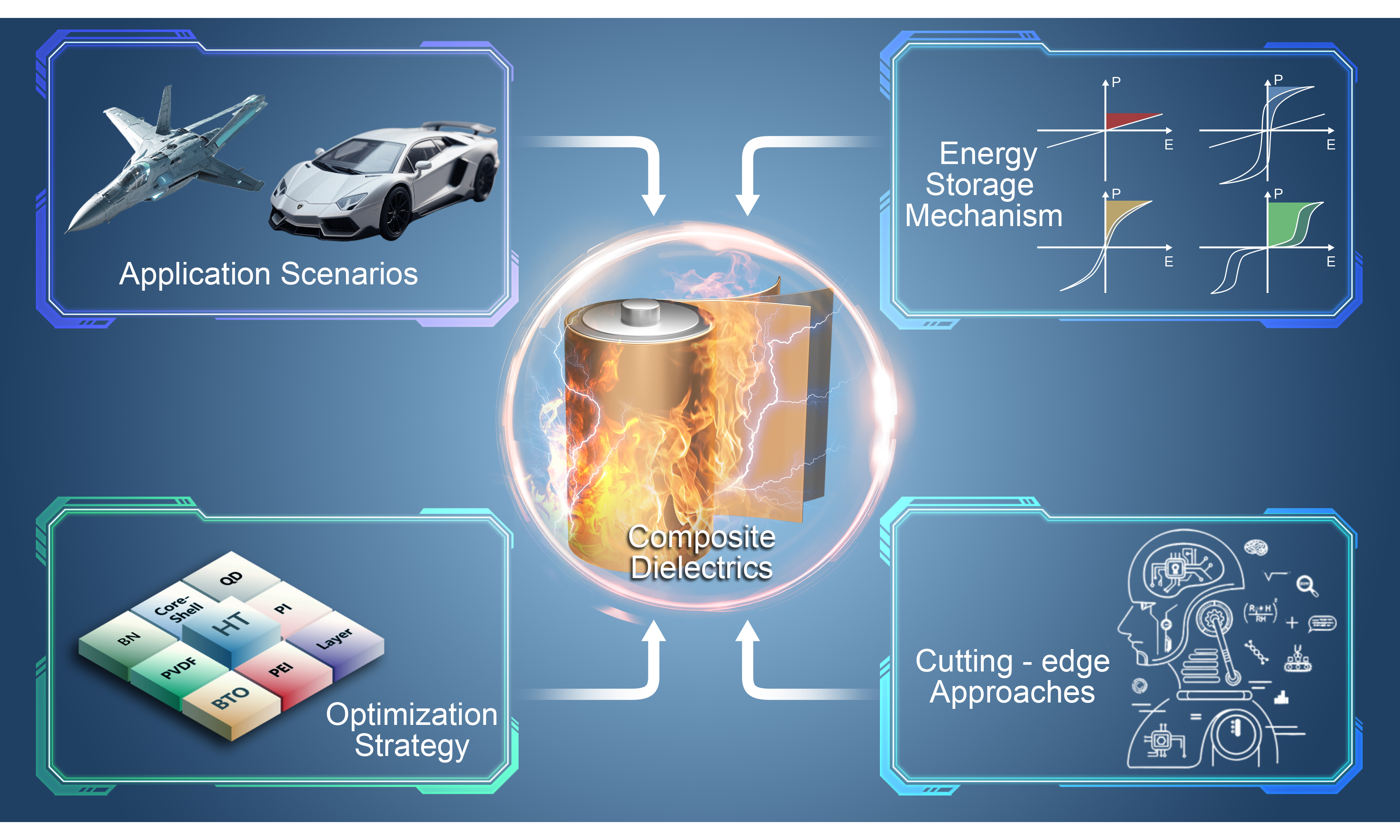
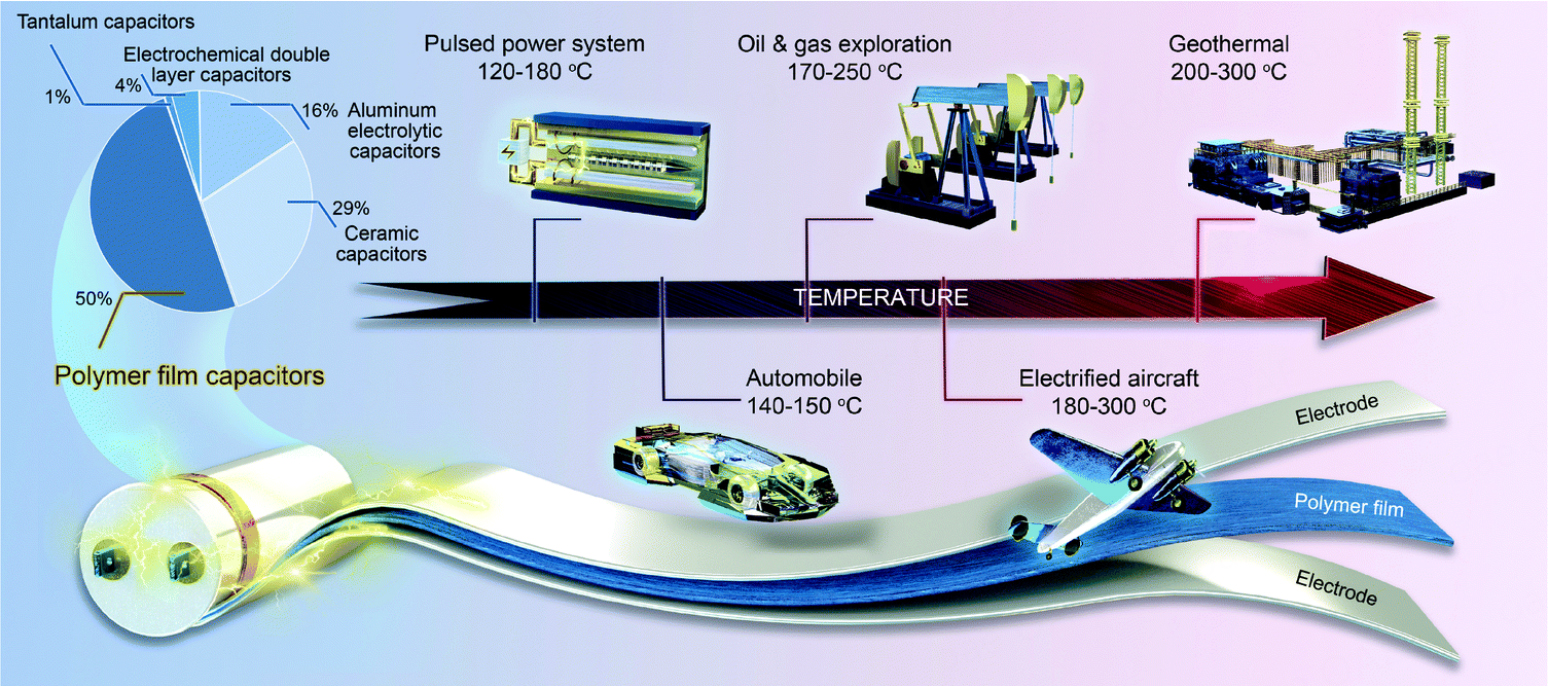
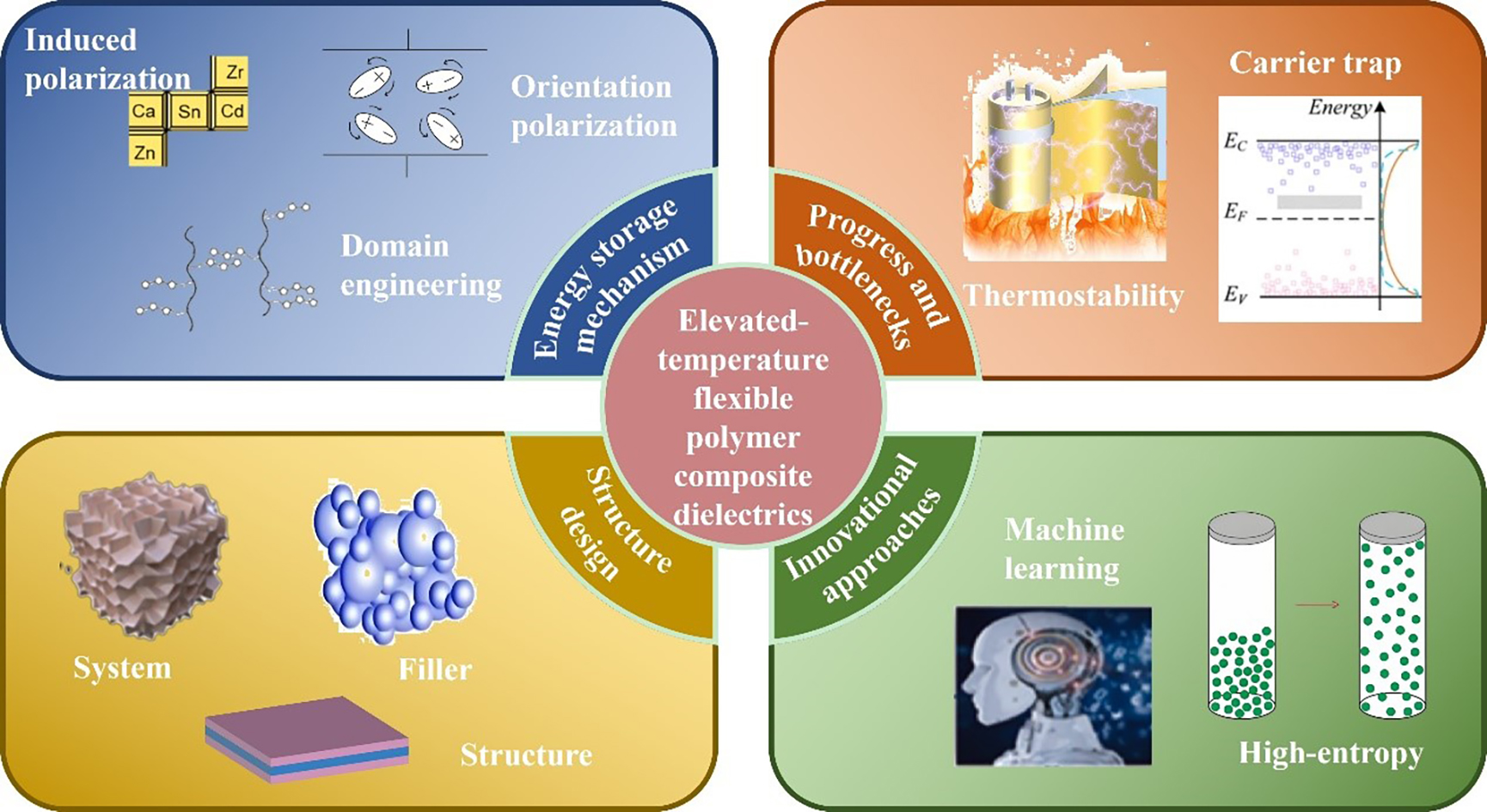

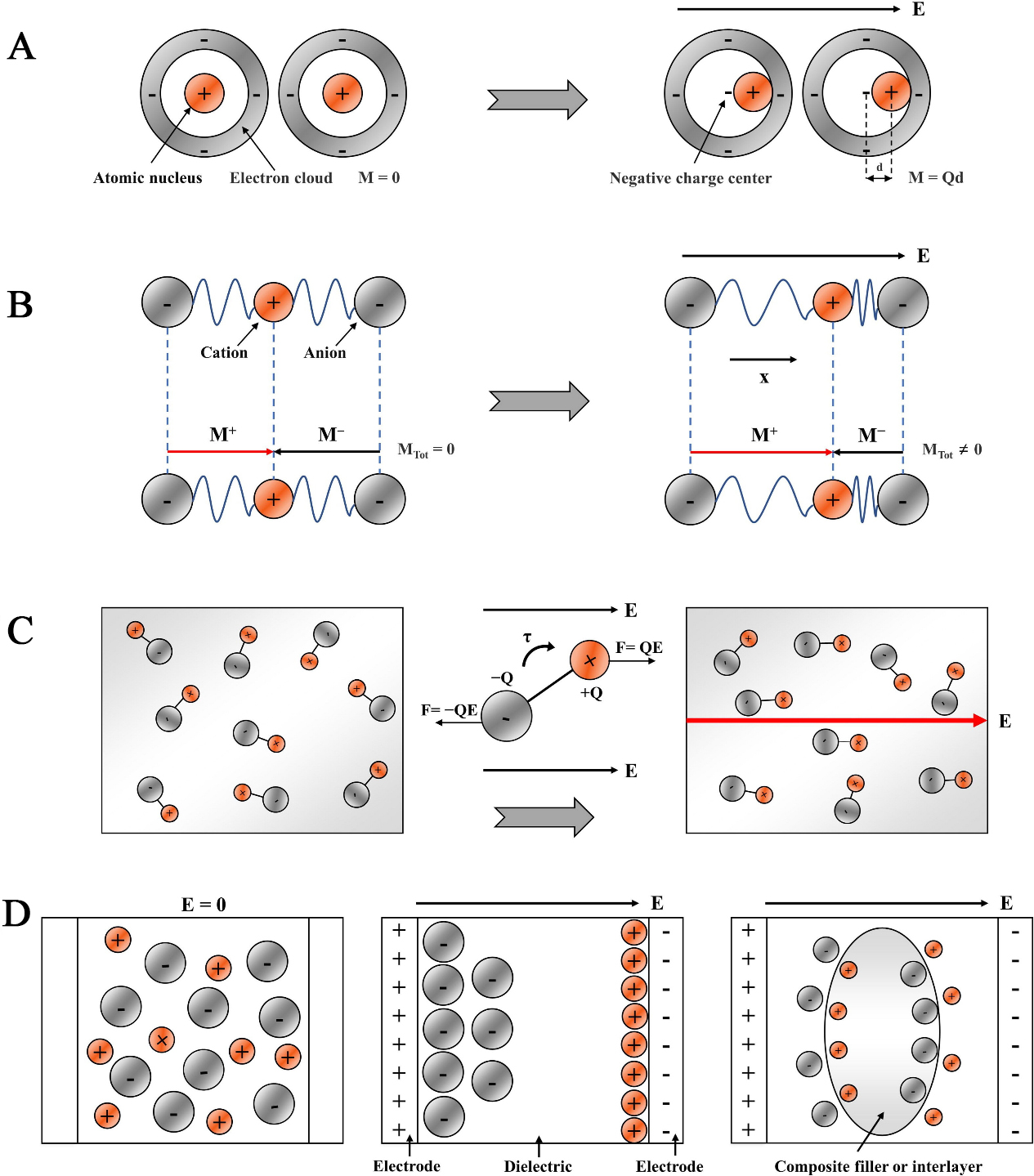
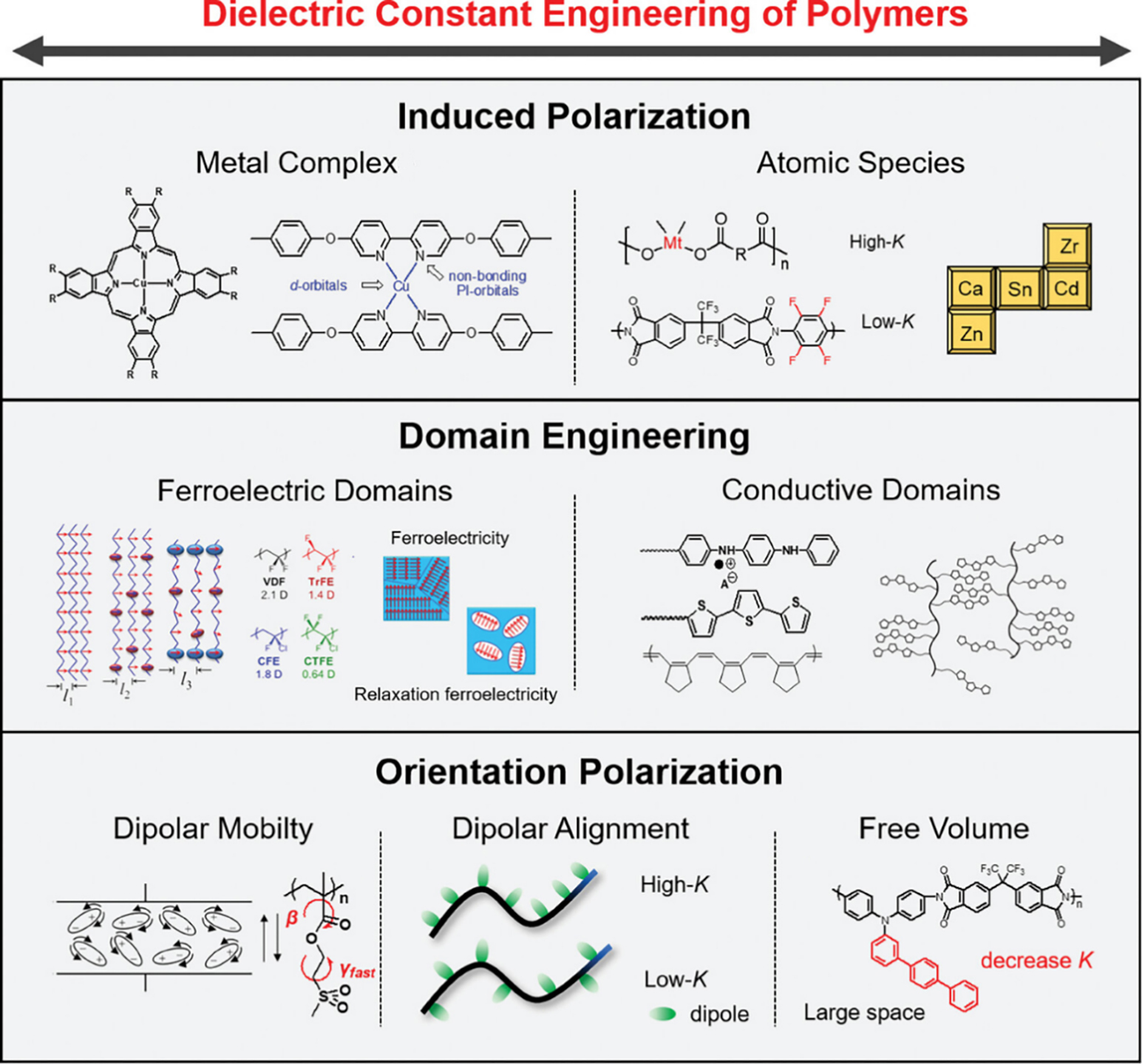
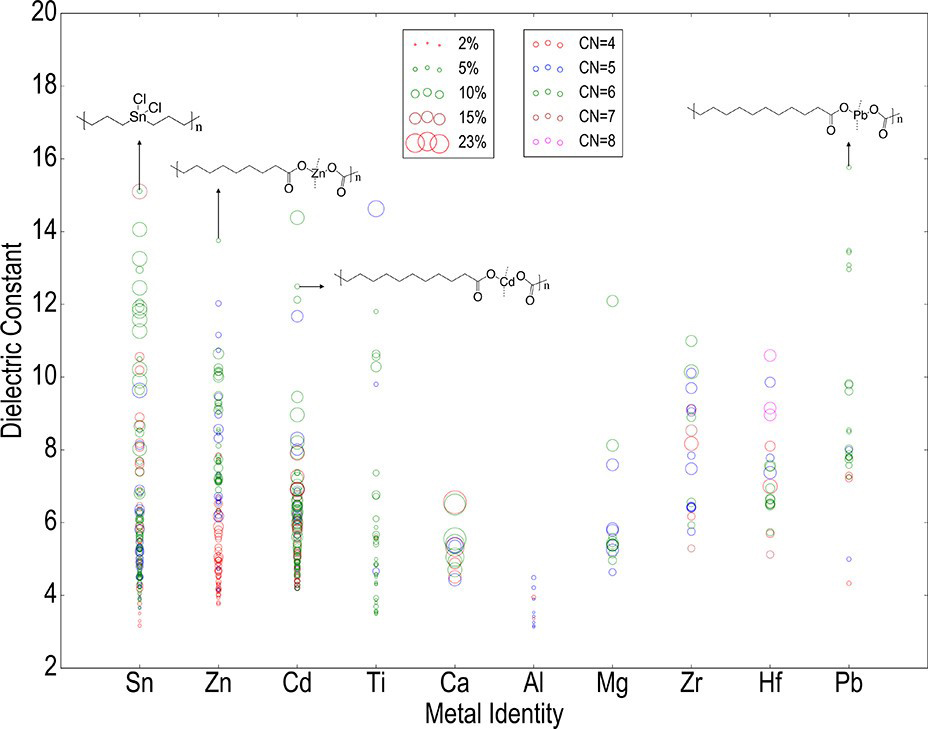
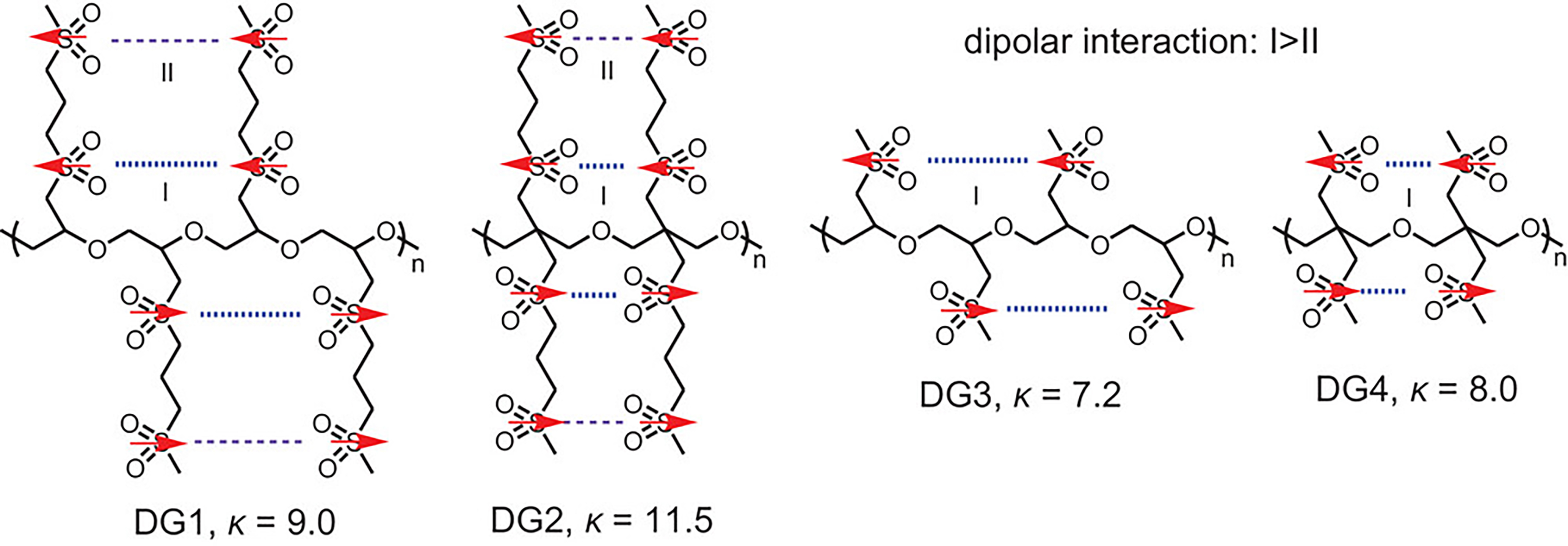
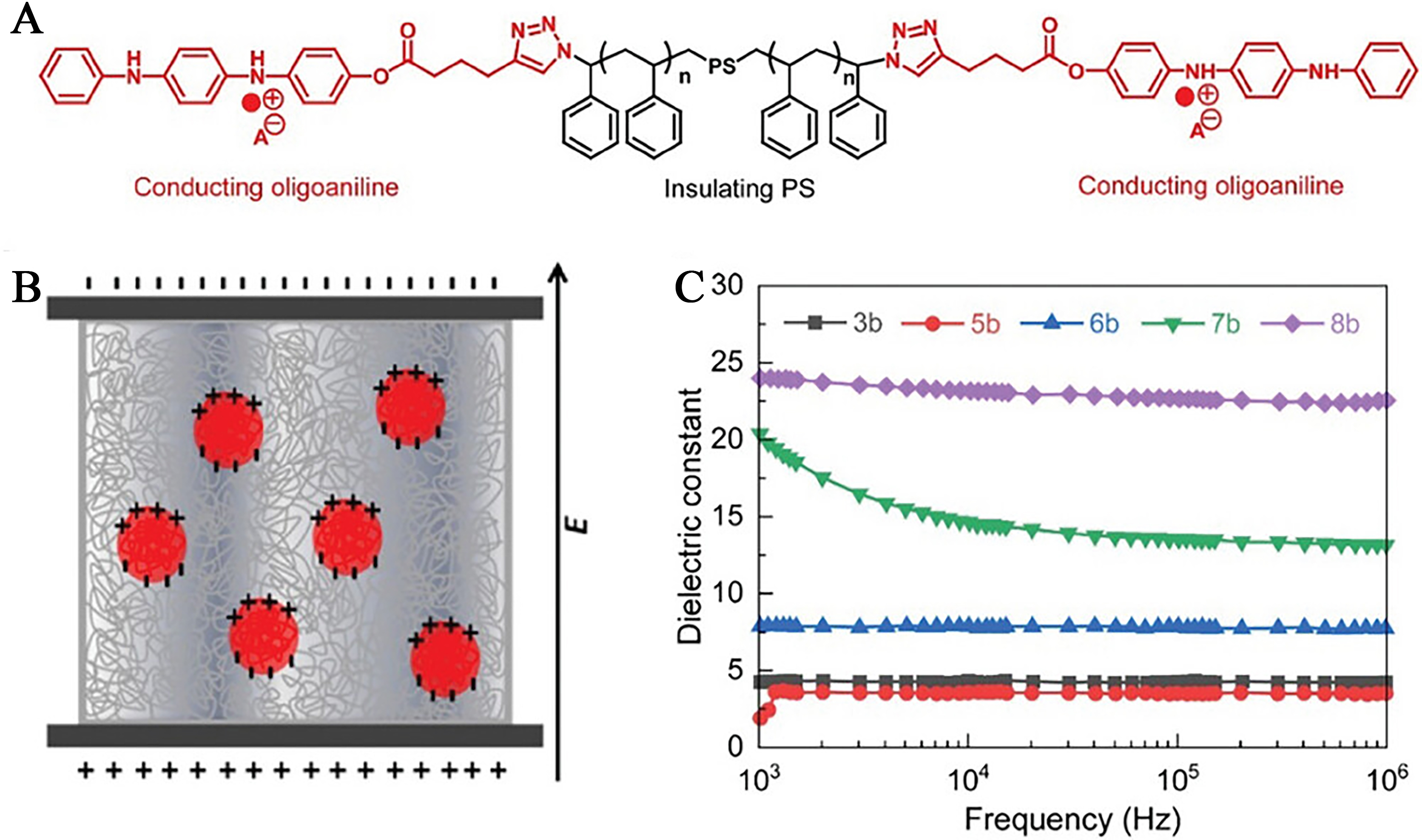
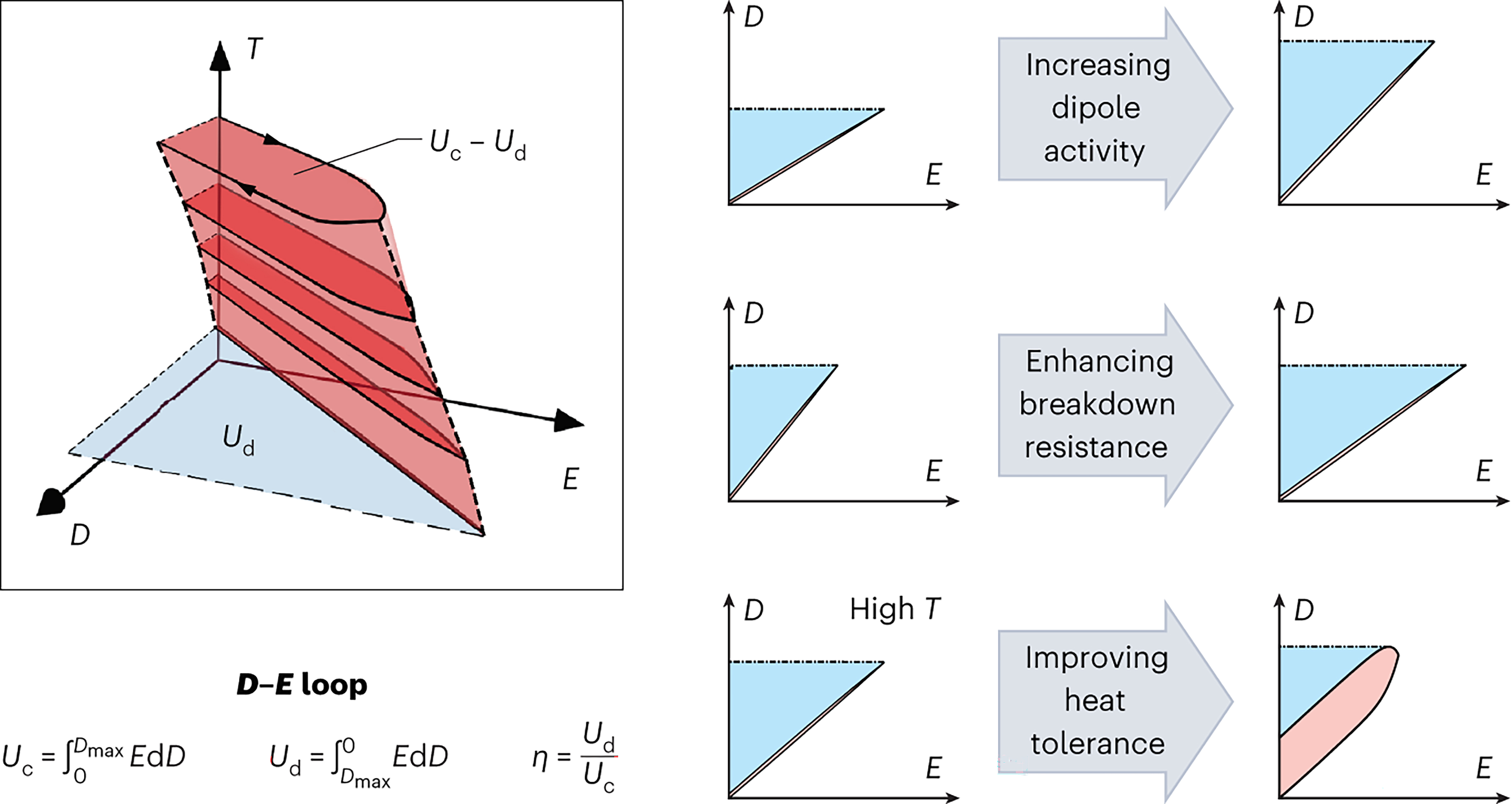
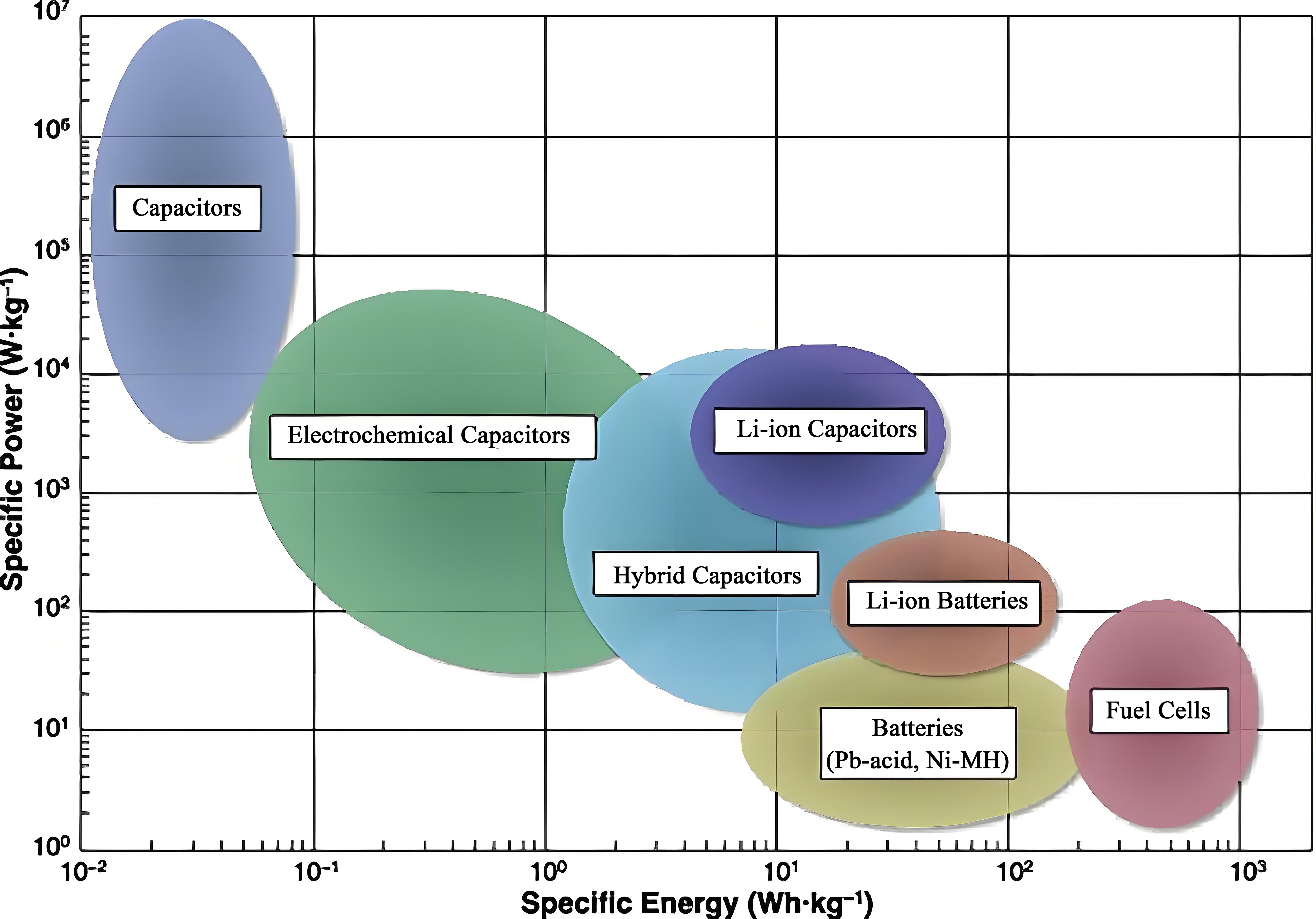
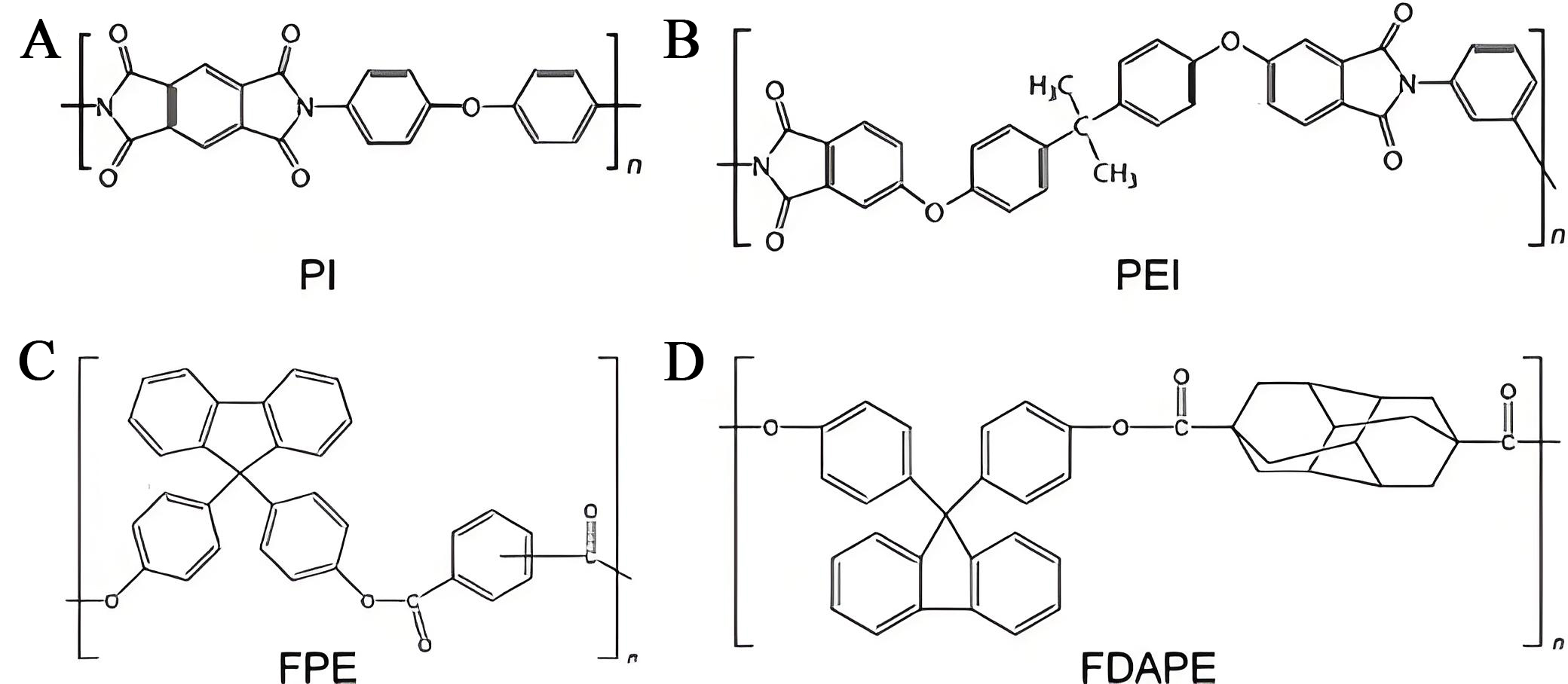
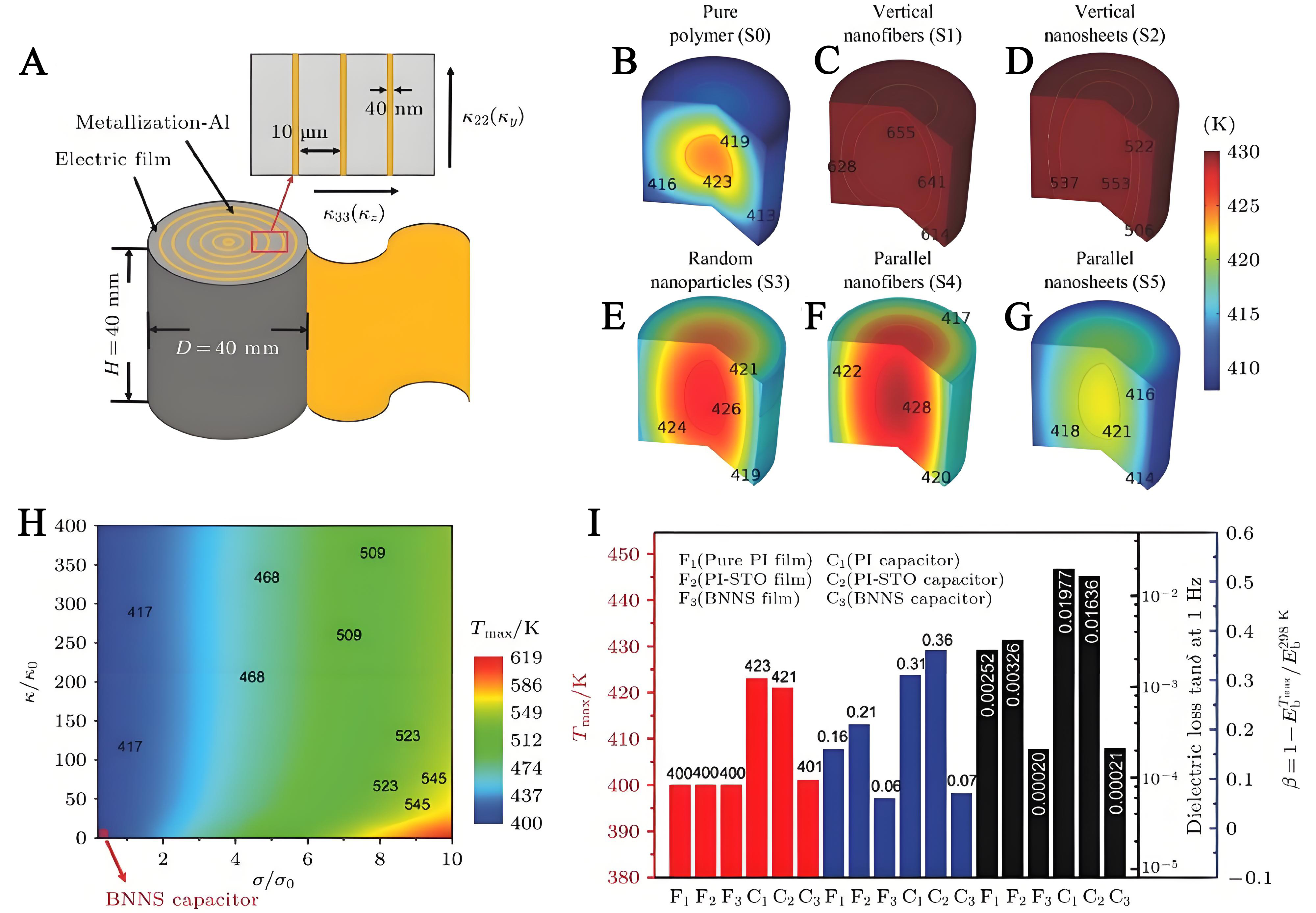
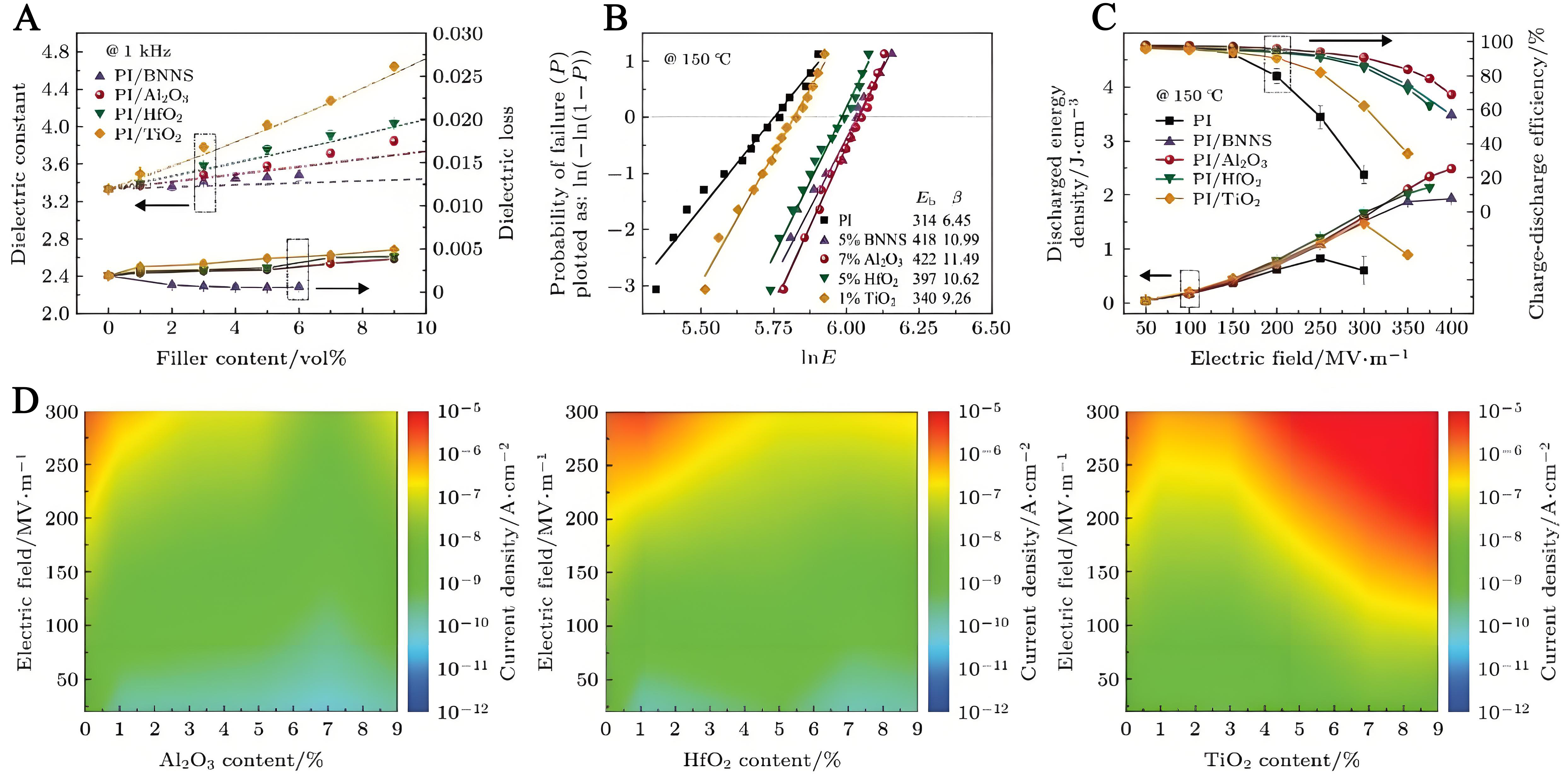
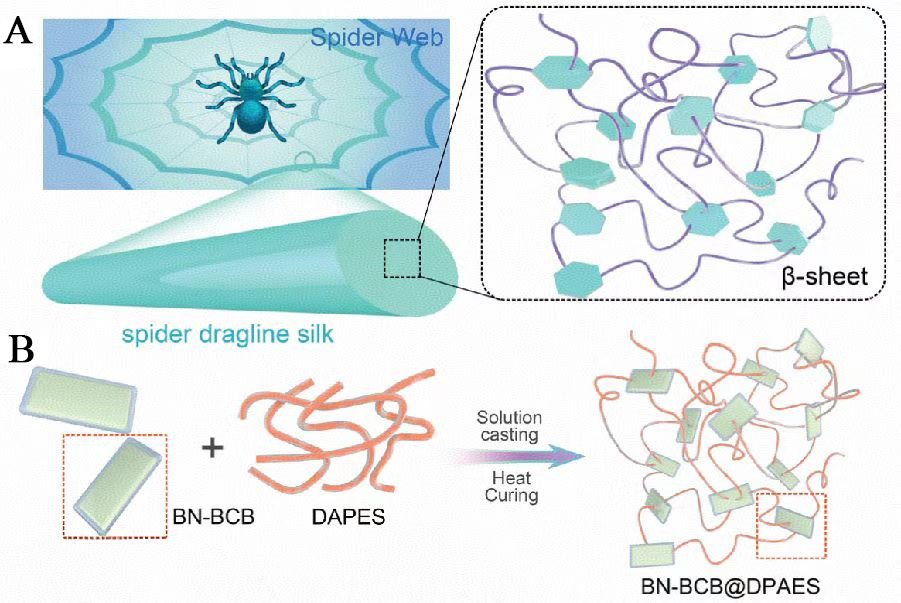
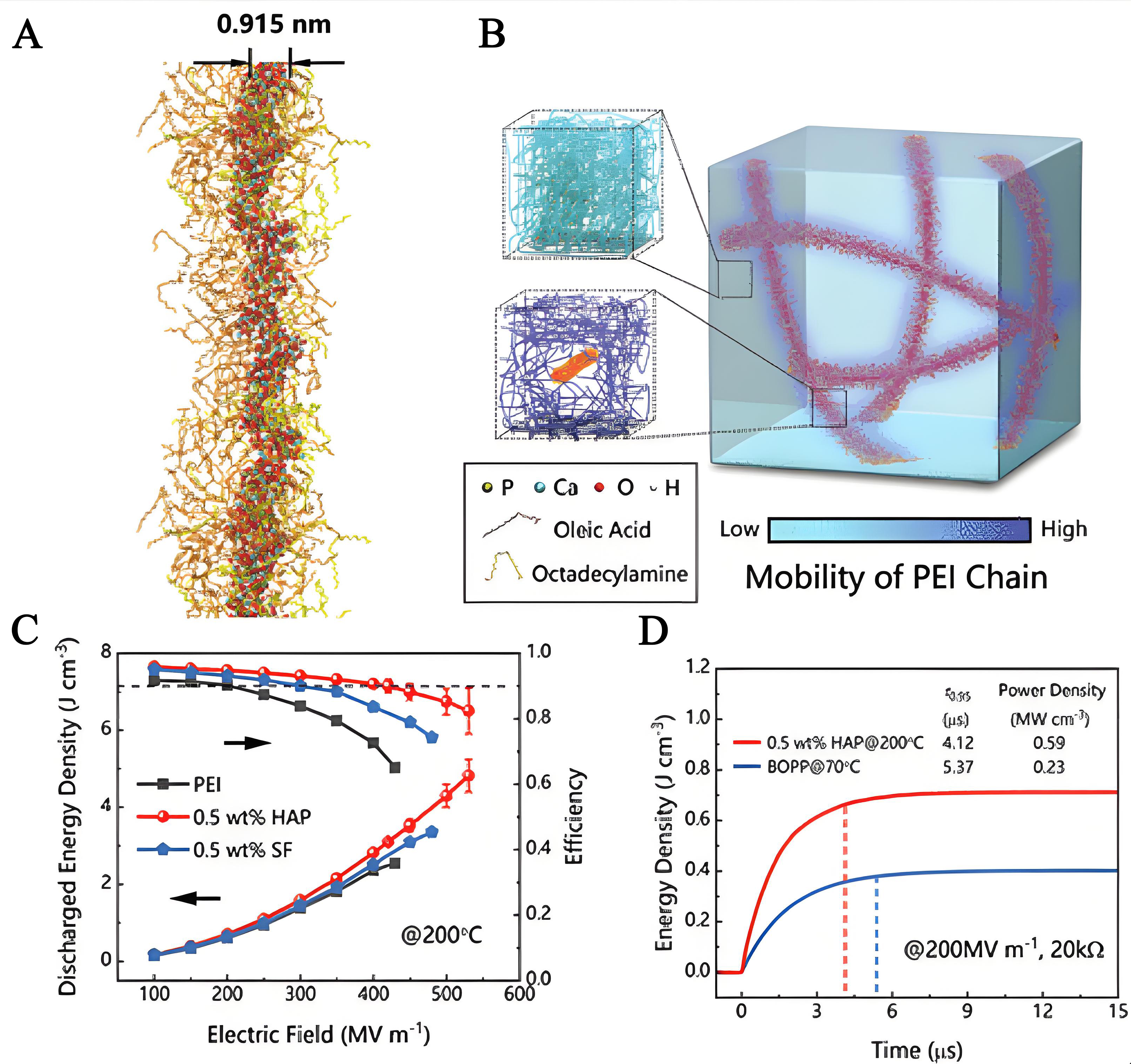
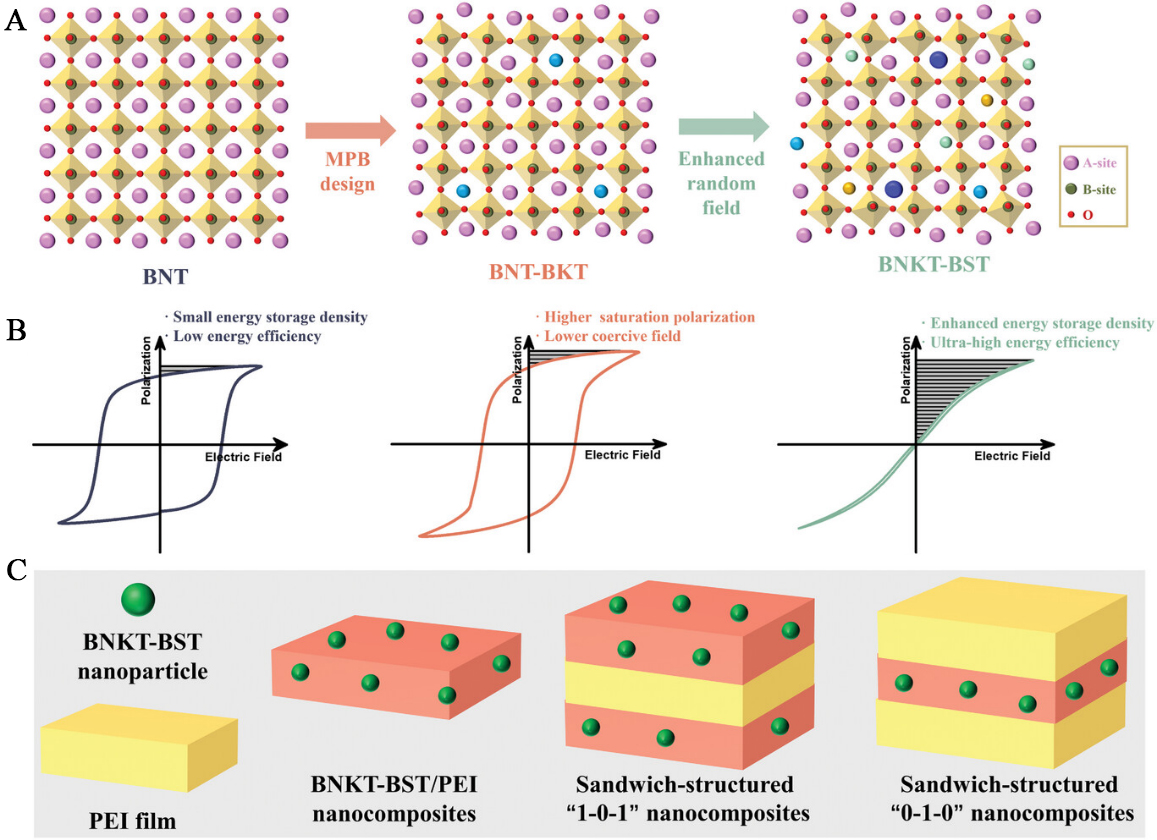
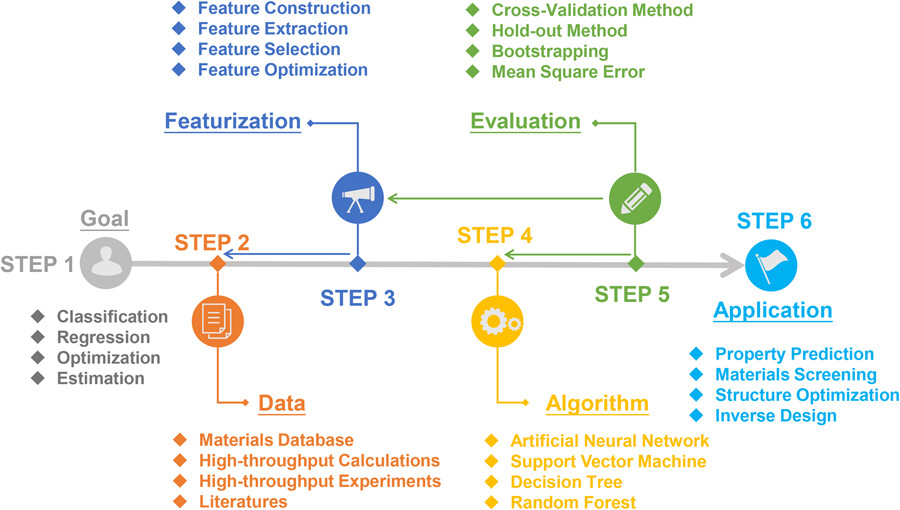

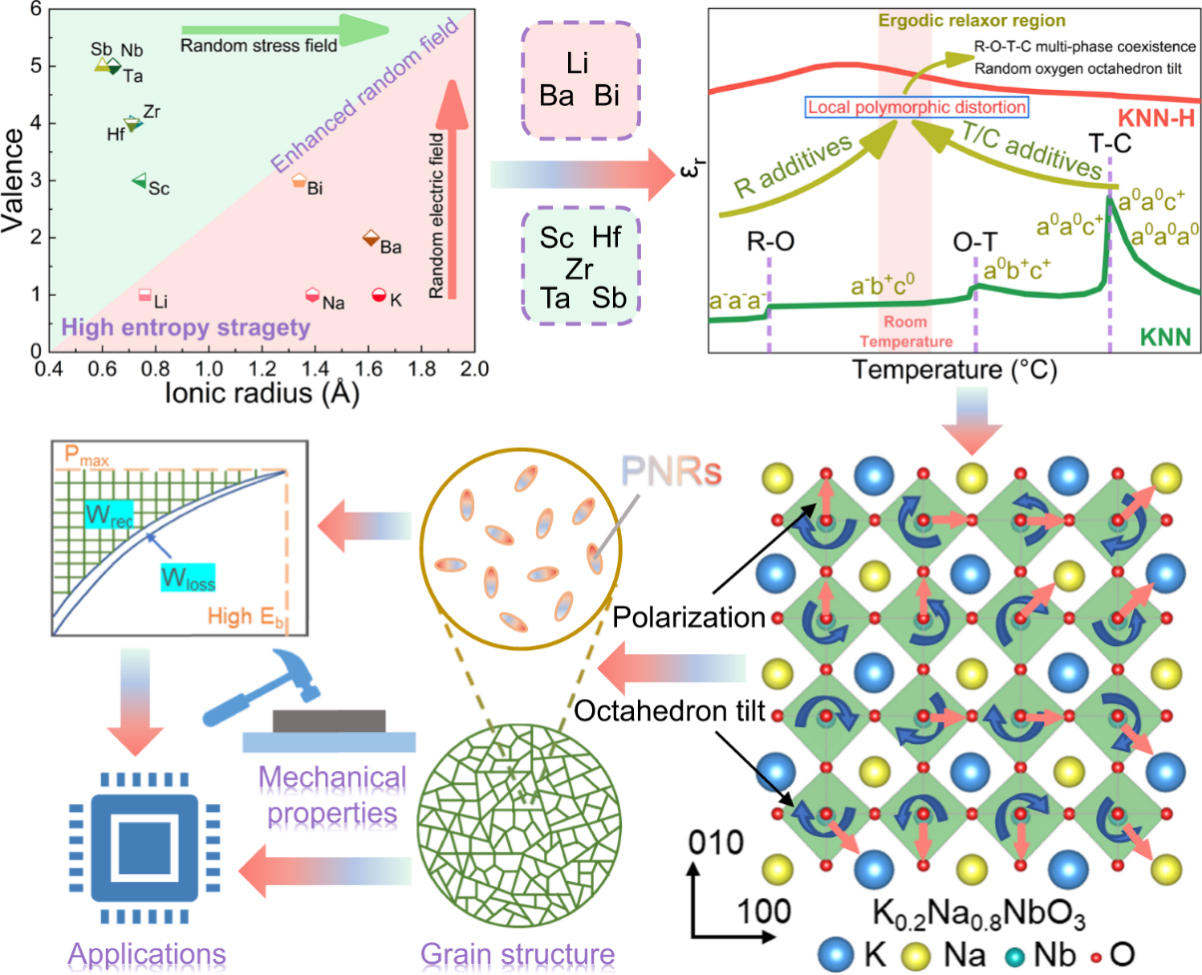
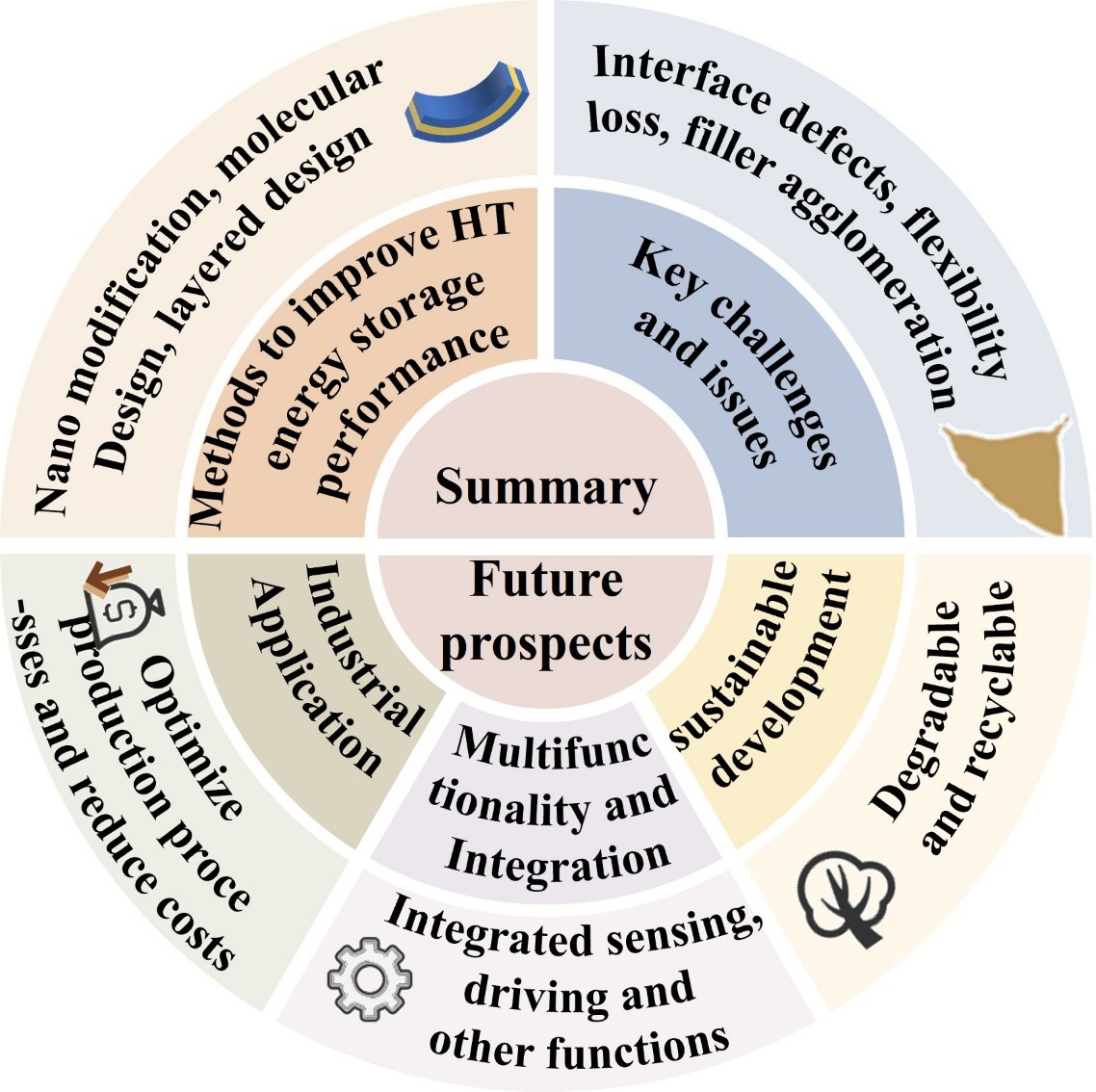







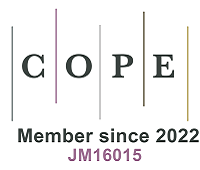




Comments
Comments must be written in English. Spam, offensive content, impersonation, and private information will not be permitted. If any comment is reported and identified as inappropriate content by OAE staff, the comment will be removed without notice. If you have any queries or need any help, please contact us at [email protected].